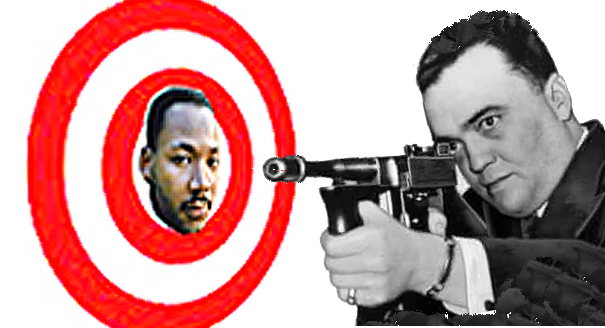
Powerful new evidence of a government-abetted conspiracy has prompted King family members to demand a reopening of the investigation into his murder.
Everyone knows that James Earl Ray shot Martin Luther King, Jr., right? The U.S. government says so. All the school textbooks say so. And it is enshrined as unquestioned gospel in the pages of Wikipedia.
But the official story is full of holes. Instead, mounting evidence suggests that King may have been murdered as part of a conspiracy planned and/or abetted by the FBI in coordination with local Memphis police personnel. In this scenario, Ray served as a patsy, like critics allege Lee Harvey Oswald was in the JFK assassination. The real shooter, according to these accounts, struck King not from the boardinghouse bathroom—allegedly from where Ray shot him—but from bushes behind the Lorraine Motel—the King assassination’s version of the grassy knoll.
This article lays out that evidence—as it may soon be laid out in court and a congressional committee—if the King family’s demands to reopen the murder investigation continue to gain traction. What follows is a reconstruction of the events leading up to King’s murder, and the subsequent purported attempts by local and national government officials to cover up their involvement and pin it on a patsy named James Earl Ray.
At 6:01 p.m. on April 4, 1968, Martin Luther King, Jr., was struck in the face by a bullet as he was leaning over the balcony of his room at the Lorraine Motel in Memphis, Tennessee.
An hour later he was declared dead at nearby St. Joseph’s Hospital.
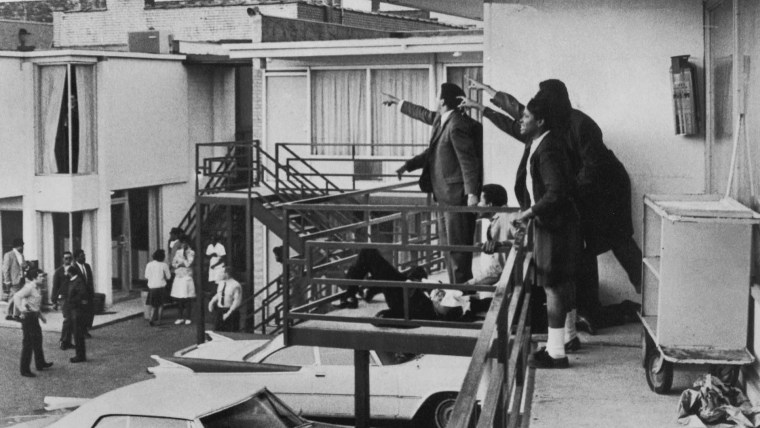
King had come to Memphis as part of his poor people’s campaign to support a sanitation workers strike. The civil rights leader was increasingly promoting socialist views, had become more outspoken in criticizing the war in Vietnam and had been running for president on an anti-war ticket with Benjamin Spock.[1]
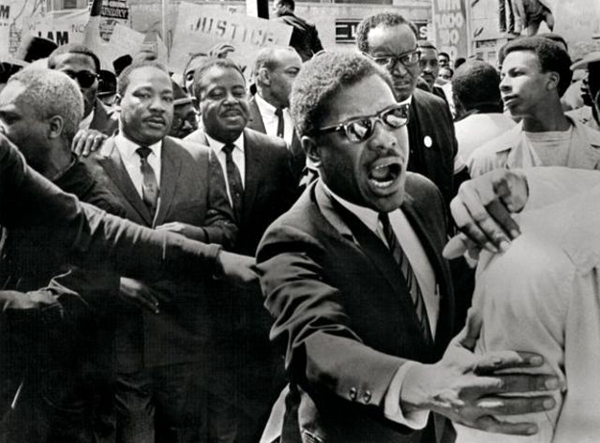
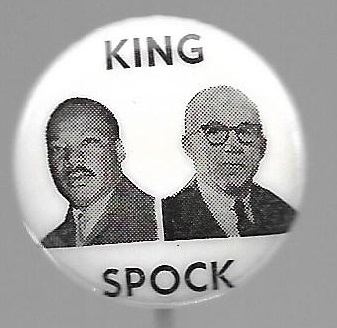
After King had given a speech denouncing the Vietnam War at New York’s Riverside Church one year before his assassination, U.S. Army spies recorded Black radical Stokely Carmichael warning him: “The man don’t care you call ghettos concentration camps, but when you tell him his war machine is nothing but hired killers, you got trouble.”
Carmichael, unfortunately, was right.

Lone Assassin?
Police authorities fingered James Earl Ray—a career criminal from Alton, Illinois, who had escaped from the Jefferson City, Missouri, penitentiary in April 1967—as the lone assassin.[2]
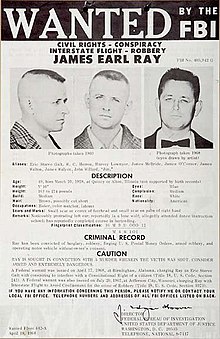
James Earl Ray in his mug shot. [Source: missouripentours.com] 
[Source: wikipedia.org]
On May 6, 1968, syndicated columnist Drew Pearson wrote that the FBI was conducting “perhaps the most painstaking, exhaustive manhunt ever before undertaken in the United States. Its G-men have checked every bar ever patronized by James Earl Ray, every flop house he ever stopped at, every cantina in Mexico, he ever visited. It has collected an amazing array of evidence, all linking Ray with the murder.”[3]
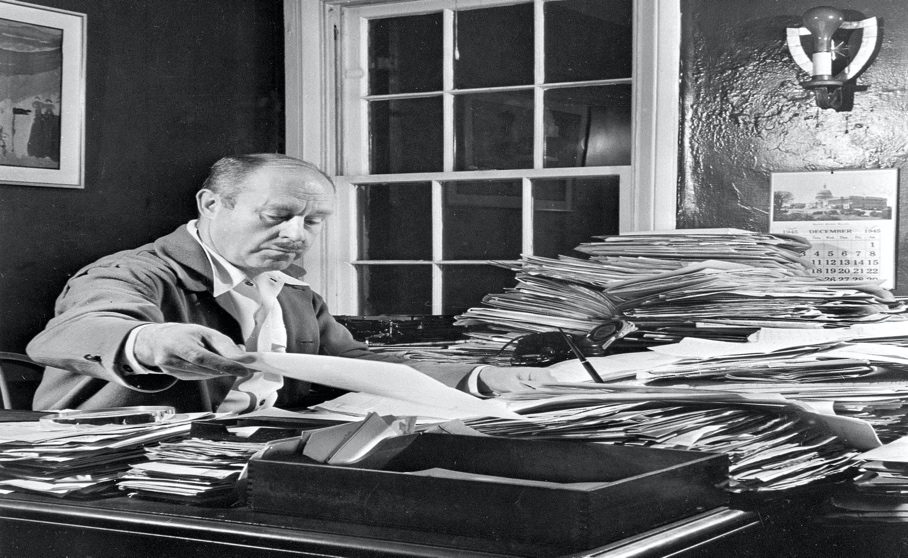
Ray was supposedly motivated by race hate. He allegedly began stalking Dr. King on the weekend of March 17 in Los Angeles, arriving in Memphis on April 3 with the murder weapon and booking into a seedy rooming house owned by Bessie Brewer above Jim’s Grill right across from the Lorraine Motel.[4]
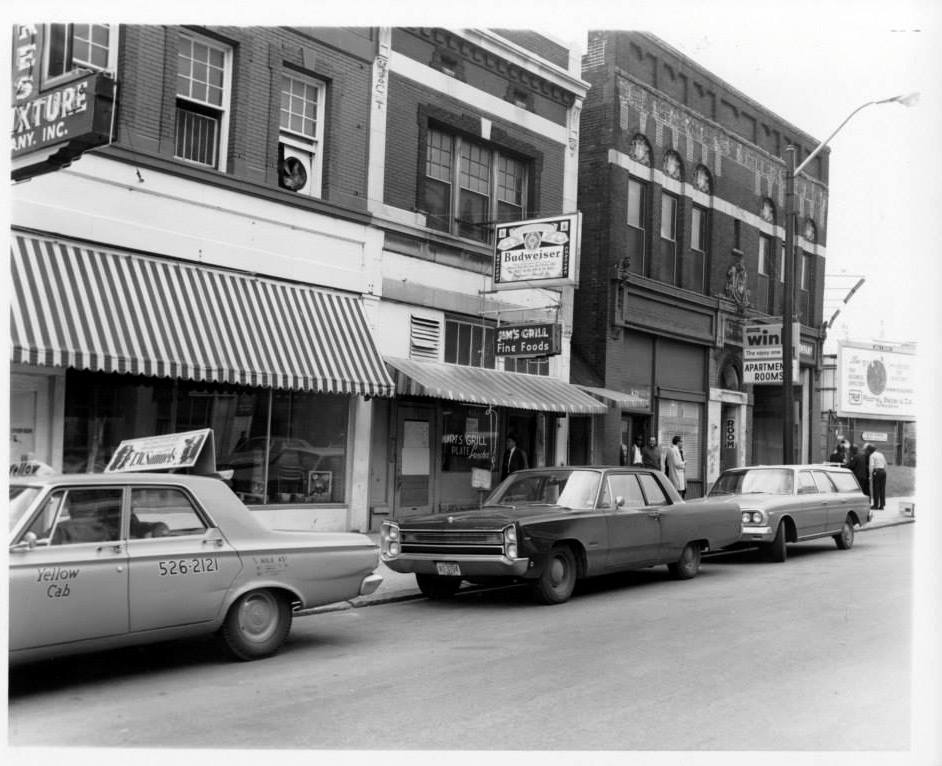
Just before 6:00 p.m., Ray barricaded himself in a communal bathroom from where he pointed his rifle outside the window and shot King.
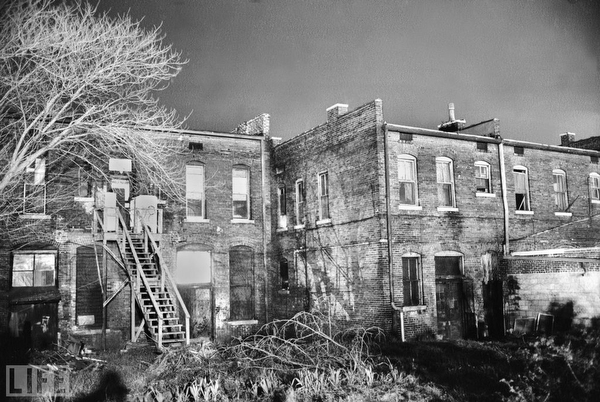
Afterwards in haste, Ray neglected to eject the spent cartridge. Back in his room, he wrapped his rifle along with an overnight bag in a bedspread and ran outside.
Ray was then spotted by another tenant in the rooming house, Charles Quitman Stephens—the state’s chief prosecution witness—who said that he saw Ray running out.
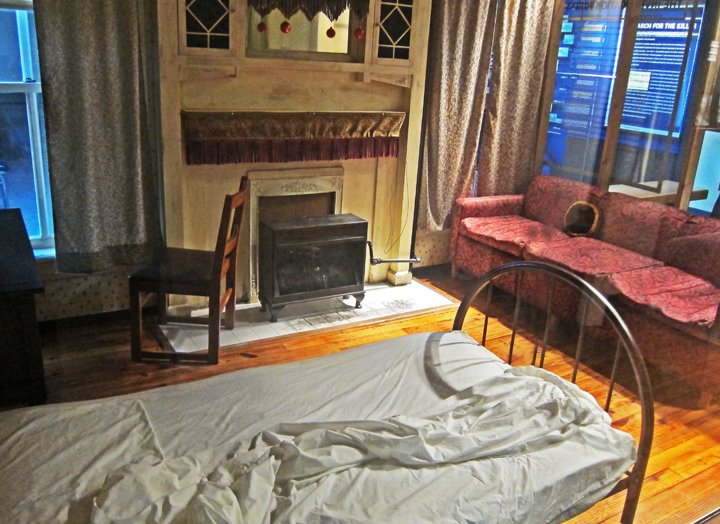
When Ray saw a stream of police cars rushing to the scene, he panicked, and dropped the bedspread with the rifle in the doorway of the Canipe Amusement Company on South Main Street.

He then fled in a white Mustang, making his way first to Atlanta, where he ditched the car, and then to Toronto, where he hid for a month, and then to Portugal and England, where he was apprehended two months later by authorities trying to board a flight to Brussels.
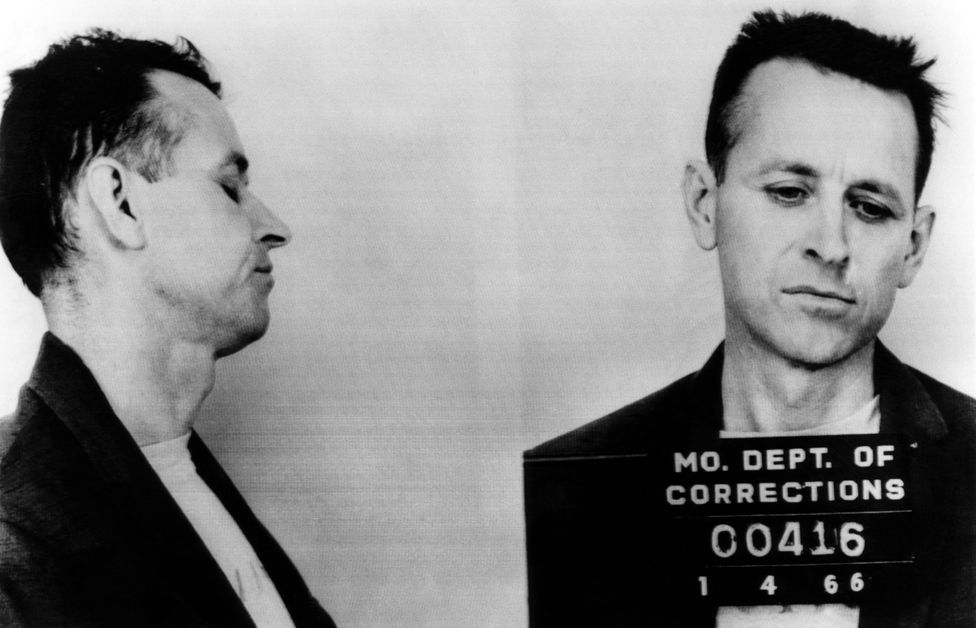
Ray’s fingerprints had been found on the gun that allegedly killed King, scope, binoculars, beer can, and a copy of the Memphis Commercial Appeal dropped in the bundle.
At his trial, Ray pled guilty and was sentenced to 99 years in prison.
House Select Committee on Assassinations and 1999 Civil Trial
The 1979 House Select Committee on Assassinations (HSCA)—which was convened to investigate the King and Kennedy assassinations—alleged that Ray carried out the killing to collect a bounty from two St. Louis racists, both dead at the time.
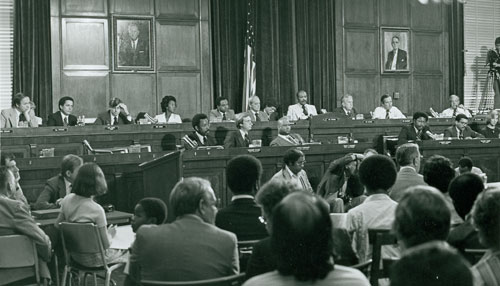
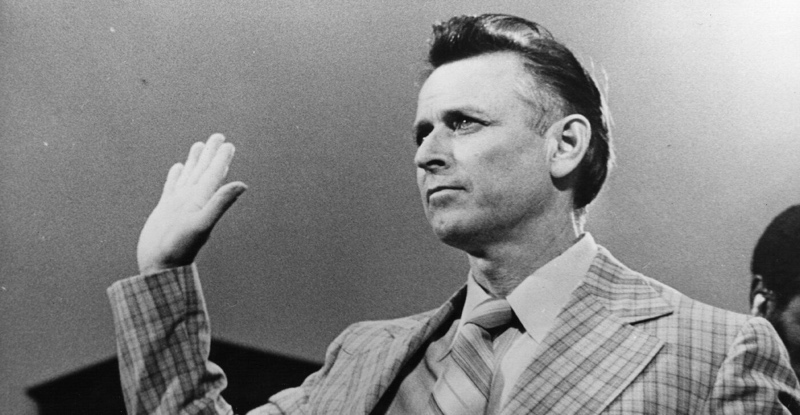
In 2012, G. Robert Blakey, staff director to the HSCA, said, however, that he had been deceived by the CIA—which had failed to inform him that a government liaison to the HSCA, George Joannides, had a CIA background. Blakey told the Jackson, Mississippi, Clarion-Ledger that “thoughtful people today, not just nuts, think that more people than James Earl Ray were involved [in King’s killing].”[5]
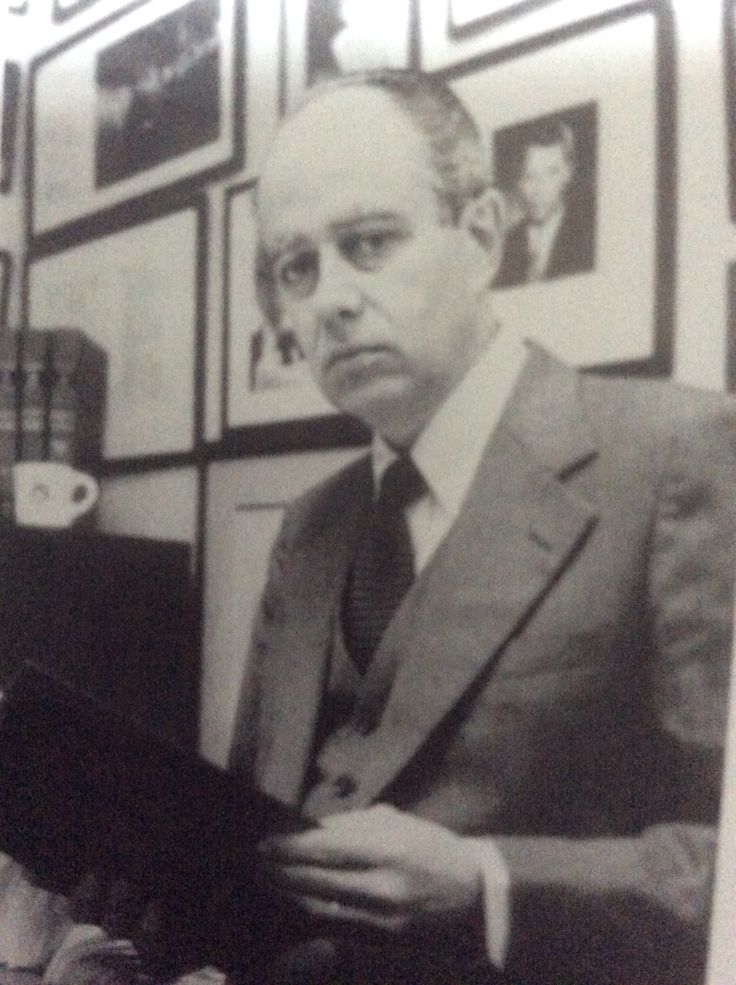
G. Robert Blakey [Source: pinterest.com] 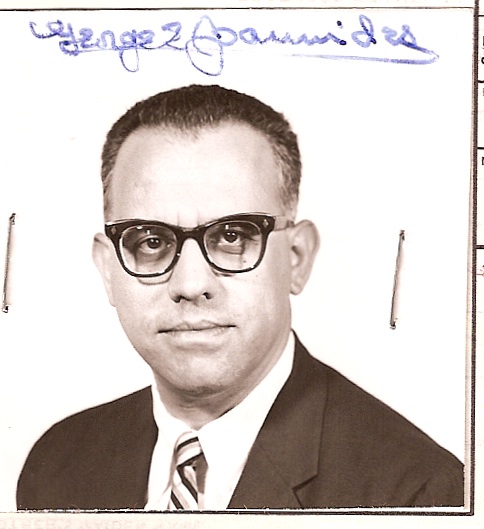
George Joannides [Source: wikipedia.org]
In 1999, a mixed-race jury presiding over a wrongful death civil suit by the King family in Memphis reached a unanimous verdict that King was assassinated as a result of a conspiracy involving the U.S. government.

King’s widow, Coretta Scott King, said afterwards that “there is abundant evidence of a major, high-level conspiracy in the assassination of my husband.” The jury found that the mafia and various local, state, and federal government agencies “were deeply involved in the assassination…. Mr. Ray was set up to take the blame.”[6]
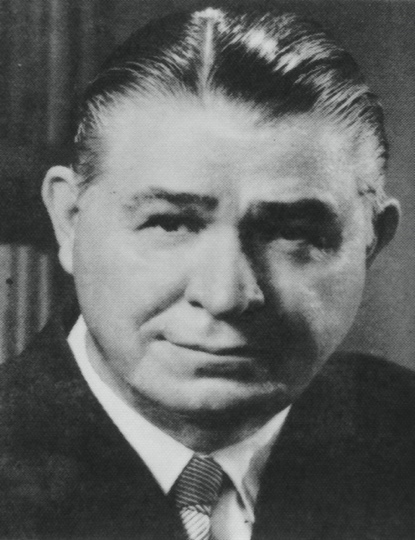
Case Not Closed
Three days after his sentencing, Ray fired his mob-connected attorney, Percy Foreman, and said that he was pressured into pleading guilty and had been set up as a patsy.[7] Foreman was given 60% royalty rights on a book about Ray by William Bradford Huie, which would not have sold if it were about a non-assassin.[8]
The FBI was never able to match the bullet that killed King with the rifle allegedly left by Ray on the steps of the Canipe Amusement Company.
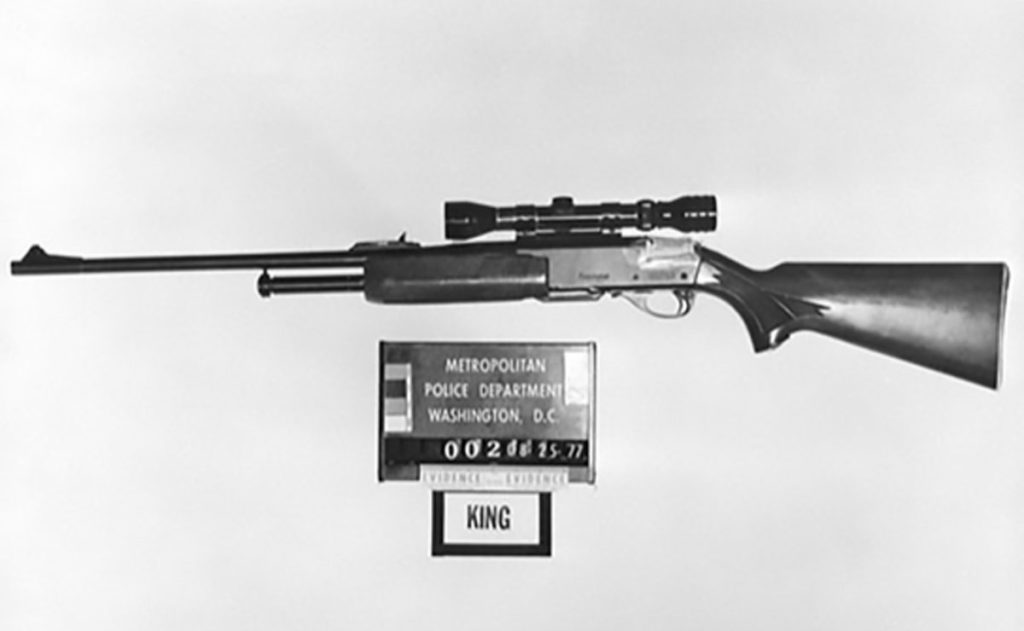
Ray’s fingerprints were also never identified in the room he had rented at the rooming house.
A well-known crime scene investigator determined that the shot from the rooming house bathroom could not have struck King unless Ray had hung out the window or smashed a ten-inch-deep hole in the wall for his rifle to fit into—the angles were all wrong.[9]
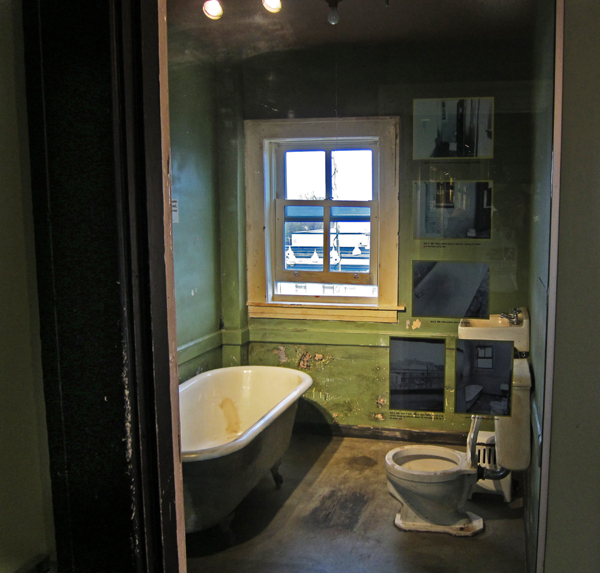
Bathroom in Bessie Brewer’s rooming house. To have killed King, Ray would have had to hang out the window, which no one observed him doing. [Source: pbase.com] 
If Ray had shot King, he would have had to be in a very awkward position. [Source: gunsamerica.com]
Memphis police officer Vernon Dollahite said that he arrived on Main Street within one minute and fifty seconds of King’s shooting and did not see a fleeing Mustang or hear screeching tires, raising doubt that Ray could have gathered his stuff, dropped it in front of the Canipe Amusement Company—a detour from his car—and gotten away to escape notice by Dollahite.[10]
Ray’s decision to drop the bedsheet supposedly resulted from his panic at seeing a parked police car after exiting the boarding house. However, the car would have been blocked by a hedge which was cut down the day after King’s death.[11]
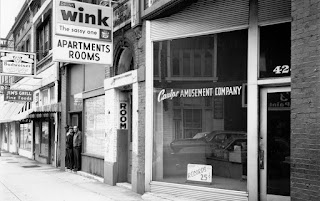
According to Guy Canipe, the bedsheet was dropped on the steps of Canipe Amusement Company approximately two to five minutes before King was shot. Canipe described the person dropping the bundle as having a “chunky build”—which did not match Ray.[12]
Ray’s old prison radio—which could be seen outside the bundle—supposedly fell out when the bundle was tossed in the doorway; however, it was not on its side, visibly cracked or broken.[13]
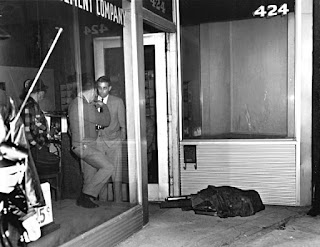
The rifle was also packed tightly—which a panicked killer in a hurry to get away could not have done.[14]
The prosecution’s main witness, Charles Quitman Stephens, had been arrested 155 times mostly for alcoholism and was dead drunk at the time of the shooting, according to his wife, landlady, a homicide detective who interviewed him (Tommy Smith) and a cab driver who picked him up.[15]
He was looking to obtain a $100,000 reward for identifying the slayer of King. Later, when shown a photo of Ray by a CBS journalist, Stephens said that he was not the man he had observed running out of the boarding house.[16]
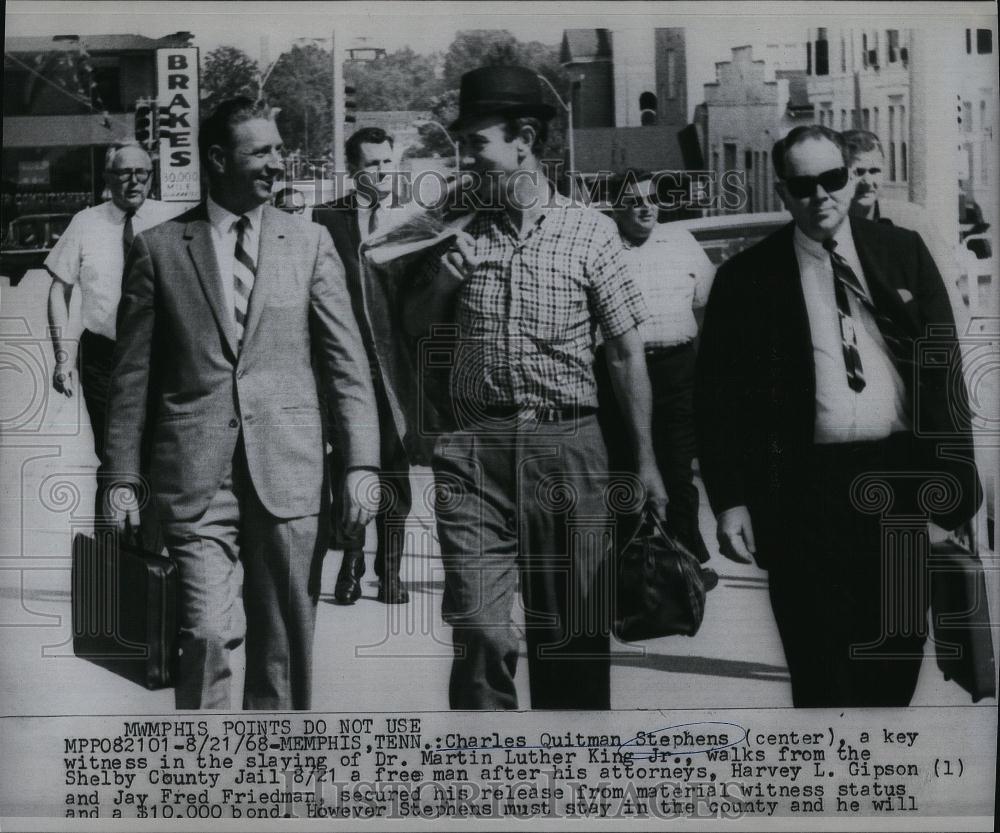
Stephens’s cab driver, James McCraw, said the hall bathroom was open and bathroom empty as he approached and left Stephens’s room—indicating that the shots did not come from there.[17]
Stephens’s common-law wife, Grace Walden, also said that she heard the shot come from outside her window in the rooming house, which opened onto the bushy area between the rooming house and motel.[18] The only man she saw coming out of the rooming house was short with “salt and pepper hair,” wearing an open army jacket and plaid sports shirt—which did not fit Ray.[19]
Two Mustangs and Ray’s Alibi
When he was picking up Stephens, James McCraw said he noticed a delivery van and two white Mustangs parked within 50 yards of each other, one in front of Jim’s Grill, the other just south of the Canipe Amusement Company.[20]
Another witness, Charles Hurley, told Ray attorney William Pepper that, after arriving to pick up his wife at the rooming house at 4:45 p.m., he pulled up behind a Mustang with Arkansas plates parked in front of the rooming house and south of the Canipe amusement store.
Ray’s Mustang had Alabama plates and was parked north of the Canipe store.[21]
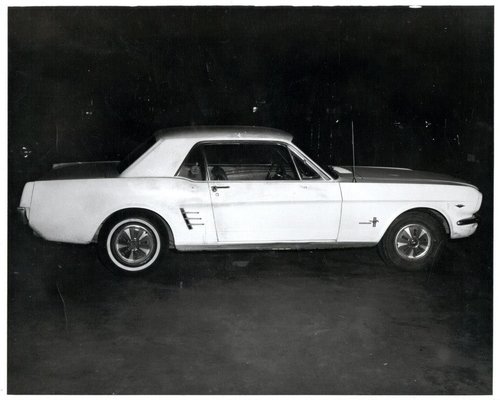
Ray said that he got into the car between 5:45 and 5:50 p.m. and went to a local service station to have a spare tire repaired—meaning that he was not at the rooming house when King was killed.
However, his brother, John Larry Ray, said that James lied and was waiting in his Mustang for his handler Raoul at the time King was shot, believing he was to be the getaway driver for some job.
Shortly after he heard the shot that killed King, Raoul jumped into the backseat of his vehicle and put a sheet over his head, and Ray drove off. After a few blocks, Raoul jumped out of the car and fled and Ray drove all night to Atlanta.[22]
After making his way to Canada, Ray was assisted financially by a mysterious “fat man,” who provided him with money in Toronto. Researcher Peter Dale Scott suggests that it was planned for Ray to be apprehended after Robert Kennedy’s assassination to enable a restoration of confidence in the government in the wake of such a tragic event and the rioting that had followed King’s killing.
An Unlikely Assassin
Ray did not have a clear motive for killing King apart from a possible financial one. He could never have survived on the lam after his prison escape and in the two months after the King assassination without outside support. Ray had received money not only for travel and lodging, but also for fake identities, plastic surgery, and even dance and bartending classes and hypnosis.
A strong anti-communist who was otherwise apolitical, Ray was painted in the media as a racist. However, people close to him said he had had a Black girlfriend, and that evidence was planted by police to make him appear to be a racist when he was not.[23]
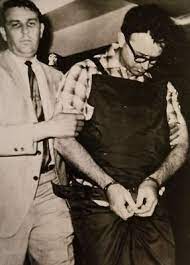
Most significantly, Ray had no expertise in firearms. During a stint in the Army, he was trained with an M-1 and obtained only the lowest level of ability.[24] The salesman who sold him the alleged murder weapon in Birmingham—which he had been told to buy by the mysterious Raoul (discussed below)—said that Ray “did not seem to know anything at all about firearms, I mean nothing.”[25]
Shot from the Bushes
King’s chauffeur Solomon Jones and Southern Christian Leadership Conference (SCLC) attorney Chauncey Eskridge, who were both looking at King when he died, said they saw King’s body lurch upwards when he was shot—and not downward—indicating that the shot could not have come from the rooming house bathroom.
Instead, it must have come from the bushes behind Jim’s Grill and between the rooming house and motel.

Ray’s first lawyer, Arthur Hanes, Sr., noticed tree branches that would have been a formidable obstacle to shooting King from the rooming house bathroom—though these branches were cut down the next day by police to try to cover this up.[26]
Several eyewitnesses reported seeing a man crouching in the bushes and running away afterward, and a sound like a firecracker coming from the bushes.[27]
Harold “Cornbread” Carter, who was drinking wine in the bushes, told investigators that he saw a man wearing a high-necked white sweater run away after with a long gun in his hand after he had heard a loud bang from the bushes.[28]
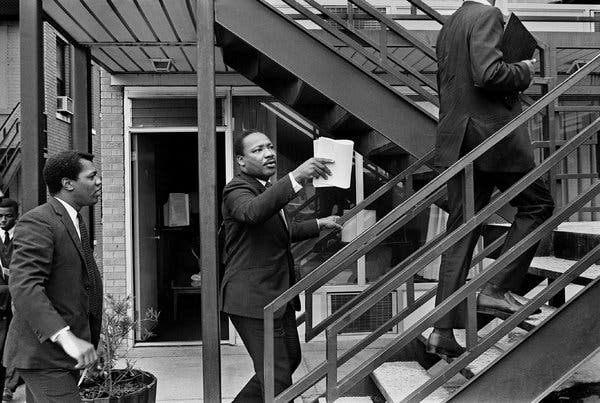
Olivia Catling said that she saw a fireman standing near the wall below the bushes yelling at the police that the shot came from the clump of bushes above the area where he was standing—but the police ignored him.[29]

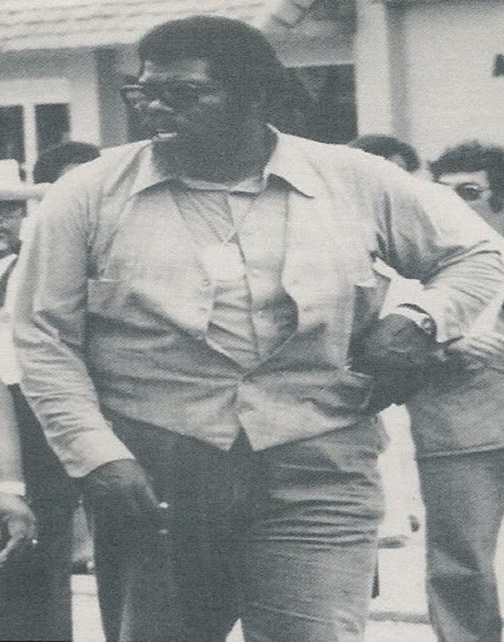
Reverend James Orange said that he saw smoke “rise from the bushes right by the fire station” seconds after the shot.[30] The smoke was most likely sonic dust rising from the bushes caused by the firing of a high-powered rifle in the heavily vegetated area.[31]
Orange and a reporter, Kay Black, also alleged that the brush area was cut and cleared back the morning after the shooting, along with the inconveniently placed tree branch that blocked a clear shot from the rooming house.
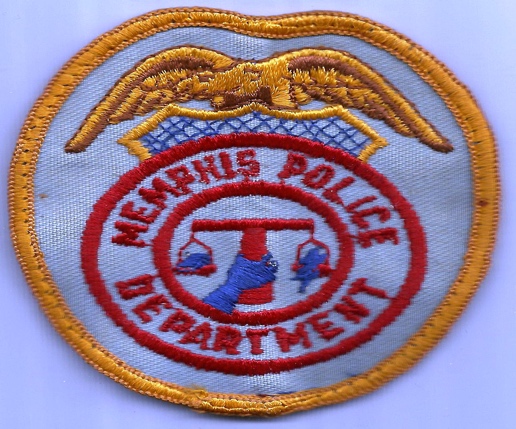
The pre-dawn clean-up request, according to Maynard Stiles, deputy director of the Memphis City Public Works Department in 1968, came from the Memphis Police Department early on the morning of April 5.[32]
Suspicious Happenings
The night before King’s killing, the only two Black firemen in the Memphis Fire Department (MFD), Norvell E. Wallace and Floyd E. Newsum, were ordered not to report the next day to their posts at Fire Station No. 2 overlooking the Lorraine Motel.[33]
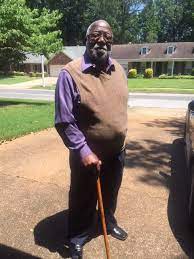
The Memphis Police Department (MPD) failed to form the usual security squad of black detectives for Dr. King and withdrew other key police security units to a position five blocks away from the Lorraine Motel on April 4—a key factor that enabled the assassin(s) to get away.[34]
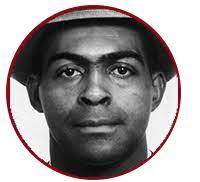
Black detective Ed Redditt was removed from his surveillance post about an hour before King’s shooting and placed in home confinement after the FBI had warned MPD of an assassination attempt directed against him—by the Mississippi Freedom Democratic Party—which proved to be phony and served as a diversion.[35]
Just before King was shot, someone else called in a hoax from downtown that drew police attention to the northeastern side of the city.[36]
This hoax indicated an organized plot and that Ray could not have been a lone assassin.
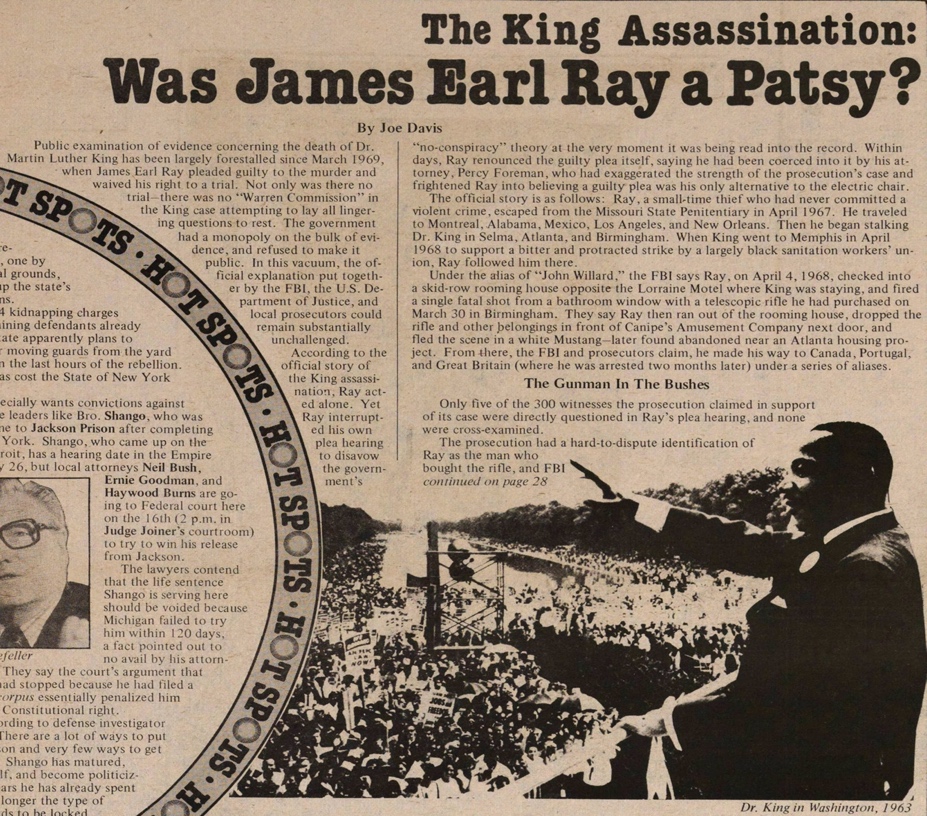
Loyd Jowers and Jim’s Grill.
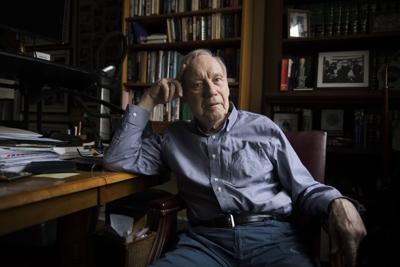
Taxi driver James McCraw told William Pepper that, on the morning after the shooting, Loyd Jowers, the owner of Jim’s Grill, showed him a rifle in a box on a shelf under the counter, which he said he had “found out back after the killing.”
This account was corroborated by Betty Spates, a young Black waitress at Jim’s Grill who implicated Jowers, her former lover, in the murder.
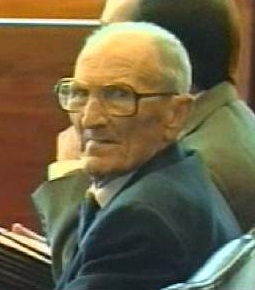
Spates said that, after hearing what sounded like a shot, she saw him run into the kitchen from the brush carrying a rifle. His hair was in disarray, and the knees of his trousers were wet and muddy as though he had been kneeling in the soggy grass or brush areas.[37]
Jowers then wrapped his rifle in a tablecloth, put it under his apron, and slipped into the café behind the counter where he discreetly placed the rifle under a shelf and then asked customer Harold Parker, a taxi driver, if he heard anything.
The shooting had only happened one minute earlier. Subsequently, a sheriff’s deputy came in and ordered Jowers to lock Jim’s Grill and keep everyone inside.
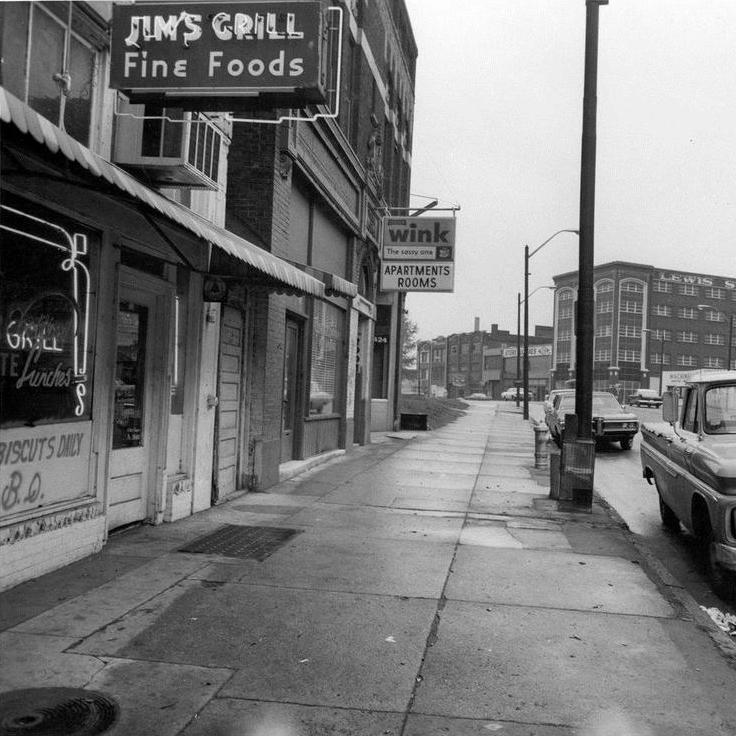
Jowers later admitted to Willie Akins, his right-hand man, that he was the figure in the bushes—though he said someone else was the shooter.[38] Akins said that his job was to kill this shooter who ran off to Florida before he could “pop him.”[39]
Jowers had been a Memphis police officer from 1946 to 1948 who went into business running clubs and then bars and restaurants.

Bill Hamblin, James McCraw’s roommate, testified at the 1999 civil trial that McCraw had told him that Jowers had not only showed him the rifle that killed King but told him to get rid of it. McCraw in turn said that he drove on to the Memphis-Arkansas Bridge and threw it off.[40]
Frank Liberto and Carlos Marcello
John McFerren, a civil rights leader in 1968, told William Pepper how he heard Frank Liberto from the back of his store before King’s death say, “I told you not to call me here. Shoot the son of a bitch when he comes on the balcony.”[41]
Liberto—a member of the Carlos Marcello crime family—told the caller he should collect his money—$5,000 was mentioned—from Liberto’s brother in New Orleans.
Frank Holt, a Black produce truck unloader whom Jowers had falsely tried to blame at one point for the murder, heard Liberto say to one of the “big-wheels” at the M.E. Carter Produce Company during the sanitation strike that “King is a trouble-maker and he should be killed. If he is killed, then he will cause no more trouble.”[42]
Lavada Whitlock Addison, the manager of a pizza parlor near Liberto’s home, said that, one day between 1976 and 1982, Liberto leaned forward and told her, “I had Dr. Martin Luther King killed.”[43]
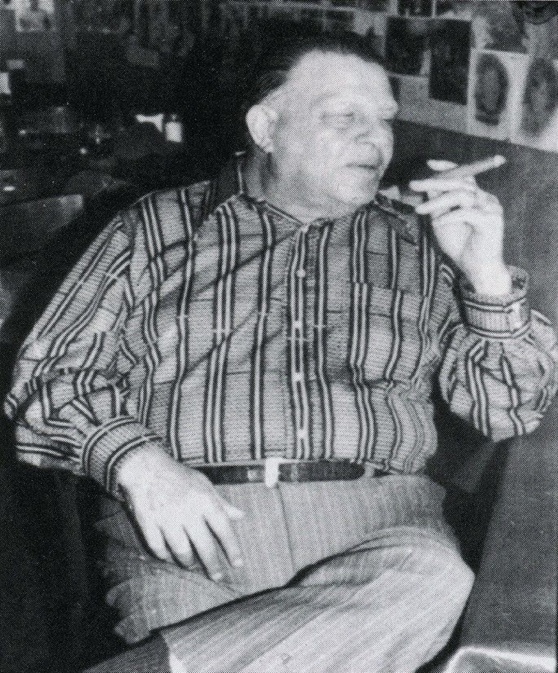
Frank Liberto [Source: pinterest.com] 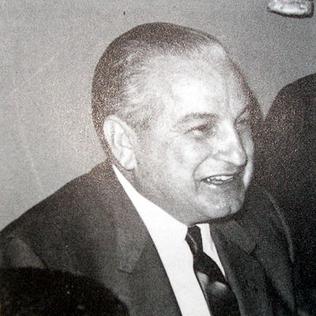
Carlos Marcello [Source: wikipedia.org]
Earl Clark and Marrell McCollough
Jowers identified the assassin as Memphis Police Lieutenant Earl Clark—who was regarded as the best shot on the MPD and was close to Liberto.[44] Afterwards, Clark allegedly scaled down a wall adjacent to the Lorraine Motel before jumping into an escape vehicle.[45]
Clark was involved in planning sessions at Jim’s Grill to prepare for the assassination with five other men, only two of whom Jowers could identify.
One of the men, unbeknownst to Jowers, was an undercover police officer and agent provocateur, Marrell McCollough, who was assigned to the MPD from the 11th Military Intelligence Group.
Born in Mississippi, McCollough had served in the military police in Vietnam and went on to work for the CIA in Central or South America. At the time of King’s slaying, McCollough was posing as a member of the Invaders, a militant Black political group, which gave him access to King and his circle. He was identified as the mysterious figure kneeling over Dr. King after he was shot.[46]
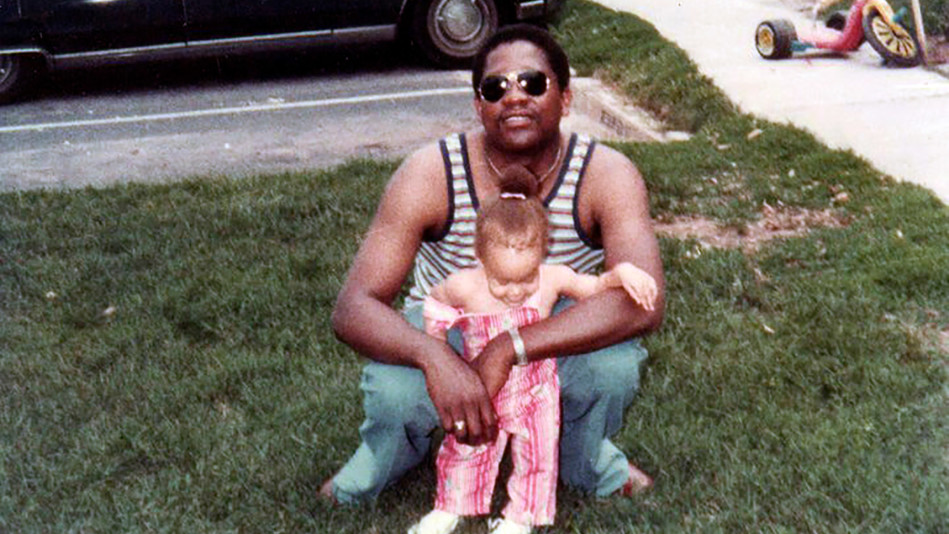
Frank Strausser and Mozes Maschkivitzan
In April 2003, Lenny Curtis, a custodian at the MPD shooting range, identified King’s killer to William Pepper as MPD patrolman Frank Strausser. Curtis said that about four or five months before King’s death, he heard Strausser—a Vietnam veteran with a reputation for beating up Black people—say in the lounge of the rifle range that “somebody was going to blow [King’s] motherfucking brains out.”
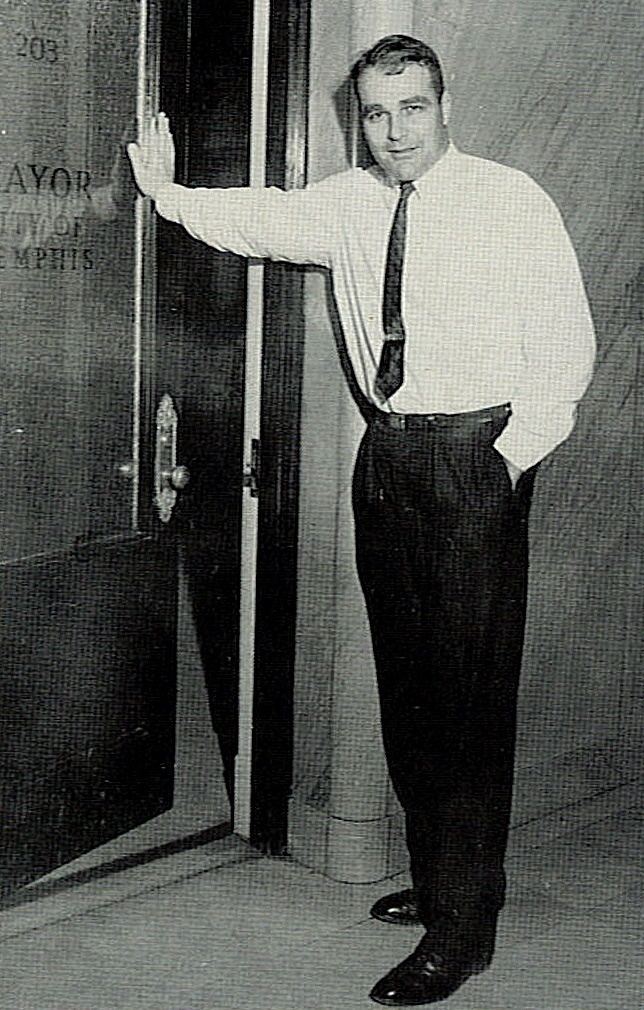
Curtis identified Strausser as being in the gun range firing a rifle all day the day before and day of King’s assassination. At around 2:30 p.m., Memphis Mayor Henry Loeb (D), MPD Chief Frank Holloman (discussed below) and a number of MPD officers including Earl Clark—whom Curtis identified as the spotter in King’s shooting—went into a meeting in a room in the rifle range. Strausser then left around 3:30 p.m. wearing a white shirt and pair of sunglasses carrying the assassination rifle in a red Chevrolet convertible.[47]
After the killing, investigators identified a size 13 shoe print in the bush behind the Lorraine Motel. In October 2013, Pepper interviewed Strausser and got him to admit that he wore a size 13 shoe.[48]
Mozes Maschkivitzan, whose likeness had been rendered in a police artists drawing, could have alternatively been the shooter in the bushes.
Maschkivitzan was a Russian emigré who’d been a double agent in World War II who testified at the trial of Nazi quisling Marshall Philippe Pétain.
After the war, he got into drug smuggling in Belgium, was recruited as a Federal Bureau of Narcotics (FBN) informant and became a CIA contract killer identified by author Richard Mahoney, the son of a CIA Agent, as being part of the 1961 assassination plot against Congo’s nationalist leader Patrice Lumumba.
Ray’s Intelligence Background

Ray’s brother John Larry believes that his brother’s role as a patsy in the King killing had been planned for many years and originated with his Army service at the end of World War II.
After enlisting in 1946 at the age of 17, Ray served in the 7892nd Infantry Regiment and as a military policeman with the 382nd Military Police Battalion in Nuremburg, Germany. Subsequently, Ray was recruited into the Office of Strategic Services (OSS), the predecessor of the Central Intelligence Agency (CIA). He told John Larry that, “when you join the OSS, it’s like joining the Mafia, you never leave.”[49]
Researcher Lyndon Barsten was told by an intelligence officer that four-digit Army units like the 7892nd Infantry Regiment were “often used for cover.”[50] The unit was based in Frankfurt, Germany—the European headquarters of the CIA, housed in the old I.G. Farben building which had been spared during the Allied bombing. Ray was given two serial numbers—which further indicated he was involved in something secret.[51]
According to John Larry, James was haunted by an incident when he was in the military police when he shot a Black soldier named Washington who was accused of beating up Jews and raping an officer’s family member—which was not true. James had been given lumbar punctures (or spinal taps) by Army doctors which can be used to administer drugs.

Gaps in Ray’s military record further lead to suspicion that he was an unwitting victim of mind-control drug experiments carried out under the CIA’s MK-ULTRA—which may have caused him to shoot the Black soldier.
FBI documents show that Ray saw two hypnotists in Los Angeles after his Army service was completed, one of whom, Xavier von Koss, had been an Army intelligence officer and was likely brought over under Operation Paperclip (which brought Nazi scientists to the U.S.).[52]
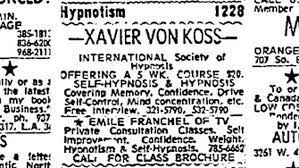
James had told his family that the Feds were “messing with his mind,” and his father felt that he had been drugged.[53]
Between 1949 and 1952, James served as an undercover operator for FBI investigations into communists in Chicago, earning him the nickname “the Mole.”[54]
When Ray was arrested after committing a robbery, an intelligence operative was spotted in the rooming house where he was staying. There is a possibility that he was there because the government wanted Ray locked up so they could use him in a later operation—knowing he was a controllable personality.[55]
Jeff City Escape
There is no better patsy than an escaped prisoner because he cannot go to the police for assistance and is dependent on his contacts for survival.
On April 23, 1967, Ray escaped from the Missouri State Penitentiary at Jefferson City, where he was serving a 20-year sentence, by hiding in a breadbox in the back of a bakery truck.
The director of the Missouri State Prison system at the time, Fred T. Wilkinson, was a U.S. intelligence operative who handled the famous May 1960 spy exchange between U-2 pilot Francis Gary Powers, whose plane had been shot down over the Soviet Union, and a Soviet Colonel, Rudolf Abel, who had been imprisoned for setting up a spy network in the U.S.[56]
The warden at Jeff City, Harold Swenson, also had an intelligence background. His predecessor, E.V. Nash, was said to have committed suicide—though the gun that killed him was found in a separate room in his house than his body.[57]
After a failed escape attempt, Ray was seen by Dr. Donald B. Peterson, head of psychiatry for the Army’s Far East Command during the Korean War, the height of the brainwashing era. Peterson prescribed Ray with Librium, a drug listed in government documents as one used to strengthen narco-hypnosis.[58]
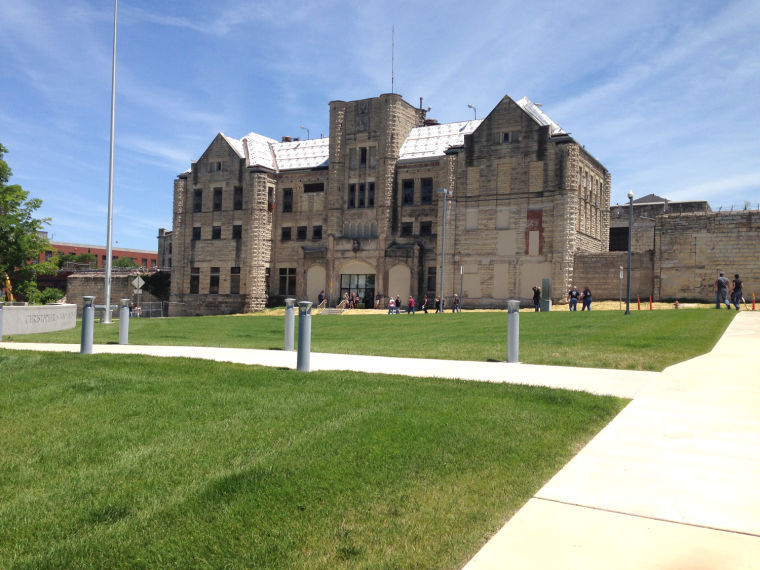
Gene Barnes, a former inmate at Jeff City, signed an affidavit in the late 1970s which said that he had been told by Warden Donald Wyrick that Wyrick, Wilkinson and Swenson had allowed James to escape Jeff City so that the feds could later use him as the fall guy in King’s assassination.[59]

The fingerprints the prison sent out after James’s escape were not his; they had been switched by Wilkinson and Swenson with another man’s—meaning that if Ray had been captured, the police would have had to set him free.
When Wilkinson retired, the inmate who talked Ray into escaping, Ronnie Westberg, committed “suicide” by hanging himself, though he was discovered with broken arms and legs, pointing to foul play.[60]
The Mystery of Raoul
After James’s escape, he came in contact with a mysterious figure named Raoul, who provided Ray with phony documents in Montreal, Canada, after the two met at the Neptune Bar.
In exchange for the documents, Raoul had Ray assist him in smuggling contraband across the border and then sent Ray to Birmingham, Alabama, where he purchased a 1966 white Mustang and a telescopic rifle that appears to have served as the fake murder weapon.[61]
In Montreal, Ray was given the identity of Eric St. Vincent Galt—who happened to be a highly placed Canadian operative of U.S. Army intelligence.[62]
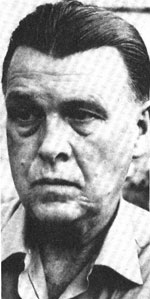
Galt ran a warehouse for Union Carbide which housed a top-secret munitions project funded by the CIA, the U.S. Naval Surface Weapons Center, and the Army Electronics Research and Development Command.[63]
At 3 p.m. on April 4, Ray met Raoul at Jim’s Grill where he was told to go to the rooming house next to the Lorraine Motel. He then waited for him after the shooting and helped him flee from the scene, before Raoul jumped out of the car and abandoned him to his fate.[64]
Raoul’s real name may have been J.C. Harden, a man Ray had been in contact with and was believed to be an FBI snitch, or Raoul Coelho, a Portuguese immigrant identified by Glenda Grabow, or Raoul Esquivel whose number Ray called.
Esquivel was tracked by a Los Angeles Times reporter to a Louisiana State police barracks in the New Orleans-Baton Rouge area, a well-known staging ground for CIA-sponsored guerrilla operations against Fidel Castro.[65]
Jules Ricco Kimble, a convicted killer who worked for organized crime, the Klu Klux Klan and CIA in the French separatist struggle in Quebec, told investigators that he flew Ray to Montreal and brought him to a CIA identities specialist who provided Ray with his aliases.
A retired CIA agent later said that the CIA identities specialist in Montreal was named Raoul Miora.[66]
Ewen Cameron and MK-ULTRA
While serving as Ray’s handler in Montreal, Kimble said that the two were ordered to go to McGill University’s Memorial Institute to undergo hypnosis.[67]
The Memorial Institute was the home of subproject 68 of the CIA’s MK-ULTRA brainwashing program run by Dr. Ewen Cameron—the lead CIA mind-control expert in Canada.[68]
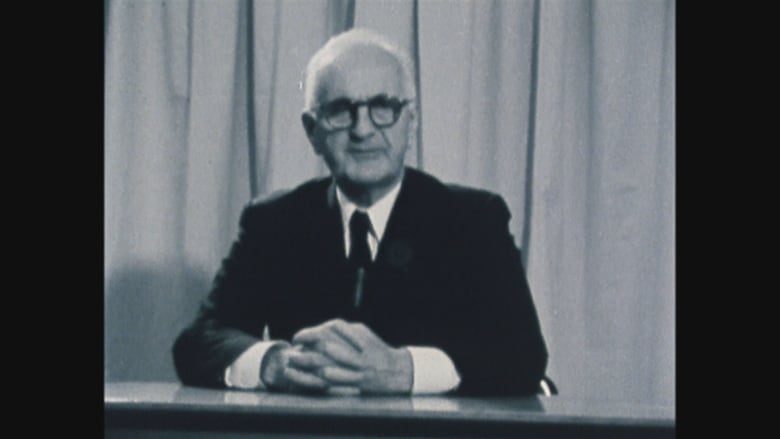
An Inside Job
Kimble said that the assassination was carried out by a team of covert intelligence operatives who had an unmarked van with sophisticated electronic radio equipment that could oversee the crime scene and monitor and broadcast on police radio channels.
Two snipers with the team used rifles identical to Ray’s, while other members obtained Memphis Police Department uniforms. The two snipers concealed themselves in the bushes behind the boarding house; one was a backup, the other shot King. The rifles were then concealed in a prearranged hiding place behind the boarding house where they were retrieved by other operatives.
The two snipers afterwards jumped down onto the sidewalk from the bushes and mingled with the other uniformed officers who were rushing about. A voucher had been established for the police imposters. If anyone asked who they were, they were told to call a certain police captain who would vouch for the “new men on the force.”[69]
Secret Army Intelligence Team
The 902nd Military Intelligence Group under the command of Colonel John W. Downie—LBJ’s CIA Vietnam briefer—had been deployed to Memphis at the time of King’s visit with orders to shoot to kill him and aide Andrew Young [later mayor of Atlanta] on command.[70] King was considered “a Negro who repeatedly preached the message of Hanoi and Peking.”
The 902nd Military Intelligence Group had been involved in gun-running with mobster Carlos Marcello; weapons stolen from Army bases were delivered to Marcello and the proceeds were used to help fund black operations.[71] According to two sources, the 902nd included “Klan guys who hated niggers.” A Green Beret said that nobody in it had “any hesitancy about killing the two sacks of shit [King and Young].”[72]
Another Green Beret who participated in a clandestine training course in riot control and surveillance identified a CIA/NSA agent whom he had recognized from his time in Vietnam climbing down a wall behind the Lorraine Motel just after King was shot.[73]
A contact in the CIA had given Downie’s team a detailed area of operations map, pictures of cars used by the King group and Memphis police radio frequencies. It carried camera equipment and took up positions overlooking the Lorraine Motel and monitored King’s telephone conversations from Room 306 and other communications. They obtained pictures that caught the shooter as he was lowering his rifle and Jowers running back toward the rooming house. These were given to Colonel Downie and never revealed publicly.[74] The secret agent who snapped the photos said that the shooter was not Ray.[75]
Ties to Dallas ’63?
In the days after King’s killing, FBI agent Don Wilson came across a 1966 Mustang with Alabama plates in Atlanta and opened the car door. An envelope and some papers fell out, which he kept hidden for the next 29 years.
One piece came from a 1963 Dallas telephone directory. The telephone numbers on the page included those of the family of H.L. Hunt and had the name Raul, the letter J, and a Dallas telephone number, which turned out to be the number of the Vegas Club which, at the time, was run by Jack Ruby, the killer of Lee Harvey Oswald.
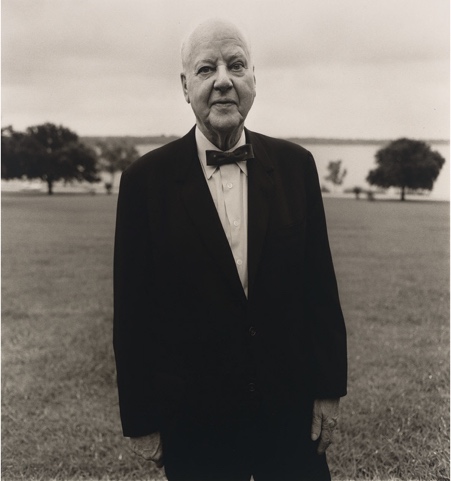
H.L. Hunt [Source: npg.si.edu] 
Jack Ruby [Source: britannica.com]
The second paper was a payoff list and included Raul’s name and a date for payment. A third piece of paper had a telephone number and extension of the Atlanta FBI field office.[76]
FBI’s War Against King
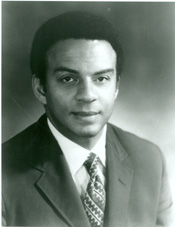
Andrew Young [Source: history.house.gov] 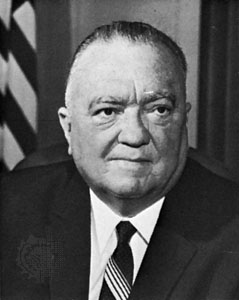
J. Edgar Hoover [Source: Britannica.com]
Pentagon Papers whistleblower Daniel Ellsberg swore in an affidavit that, during a 1978 conversation with Brady Tyson, then an aide to UN Ambassador Andrew Young, Tyson said that a group of off-duty and retired FBI officers, including a sharpshooter, working under the personal direction of J. Edgar Hoover, killed King and then covered it up.[77]

According to Ron Adkins, Hoover’s right-hand man, Clyde Tolson—who allegedly was routinely given money by Hoover to perform criminal deeds including local contract killings—planned King’s assassination beginning in May 1964 on a cruise to Southampton, England, with Russell Adkins, Sr., Ron’s father and a Memphis city engineer, Klansman, and fixer for the Dixie mafia.[78]

Part of the plot involved Tolson’s providing envelopes of money to be paid to informants and $25,000 to the warden of the Missouri state prison, Harold Swenson, to arrange for Ray’s escape.[79]
Hoover had considered King an enemy of the state. In December 1963, less than a month after the assassination of President Kennedy, FBI officials had met in Washington to explore ways of “neutralizing King as an effective Negro leader.”[80]
Hidden microphones were placed in Dr. King’s hotel rooms in an attempt to pick up evidence of extramarital sexual activity, break up his marriage, or blackmail him.

The Bureau also engaged in surreptitious activities and burglaries against Dr. King and SCLC.[81] In a letter sent to King in 1964 calling King a “colossal fraud,” the FBI even encouraged him to commit suicide.

FBI-MPD Links
The FBI enjoyed very close connections with the Memphis PD.
E.H. Arkin founded MPD’s intelligence unit in 1967 under the tutelage of FBI agent William Lawrence, who headed the FBI Memphis Field Office’s domestic intelligence operations which surveilled King.[82]
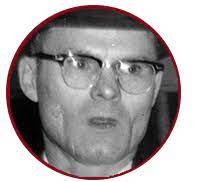
The head of the MPD at the time of King’s assassination, Frank Holloman, was a 25-year FBI veteran from Mississippi who was in charge of director J. Edgar Hoover’s Washington office from 1952 to 1959. In the mid-1960s, Holloman headed the FBI’s Atlanta office when it was the nerve center of surveillance and skullduggery directed against King.[83]
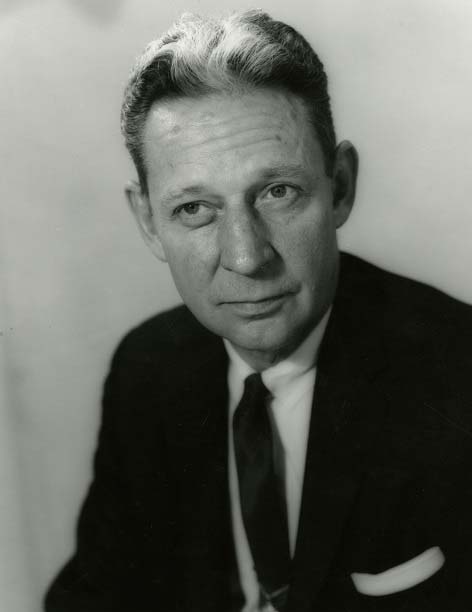
A law-and-order conservative who railed against “long-haired, foul-smelling hippies” and “hostile forces in Black Memphis,” Holloman had served in a special intelligence unit in World War II that reported to Nelson Rockefeller. He promoted aggressive police tactics against Blacks during the sanitation workers strike whom he accused of adopting “guerrilla warfare” and oversaw an expansion of MPD’s internal security division.[84] The Tri-State Defender called Holloman an “advocator of genocide of Black people,” and included a cartoon depicting him firing his pistol under the shelter of hooded Klansmen.[85]
Holloman said that his first priority as police chief was to ensure that “there was always a ‘two-way street in terms of the flow of information’ between the MPD and FBI.”[86] He was the one to move the Black firemen and pull Black detective Ed Redditt away from protecting King—and, according to witnesses interviewed by William Pepper, was involved in numerous other aspects of the planning of King’s death.[87]
FBI Gets King to Stay at the Lorraine Motel—and Switch His Room
On March 29, 1968, the FBI issued from headquarters a COINTELPRO (Counterintelligence Program) memorandum, written by G.C. Moore, chief of the racial intelligence section, to William C. Sullivan, Assistant Director in charge of the intelligence division, that was designed to influence King to stay at the Lorraine Motel when he returned to Memphis on April 3.
The memo recommended placement of a news item with the Bureau’s friendly sources which would read as follows:
The fine Hotel Lorraine in Memphis is owned and patronized exclusively by Negroes but King didn’t go there after his hasty exit [from] the demonstration of March 28. Instead, King decided the plush Holiday Inn Motel, white-owned, operated and almost exclusively white patronized, was the place to “cool it.” There will be no boycott of white merchants for King, only for his followers.[88]
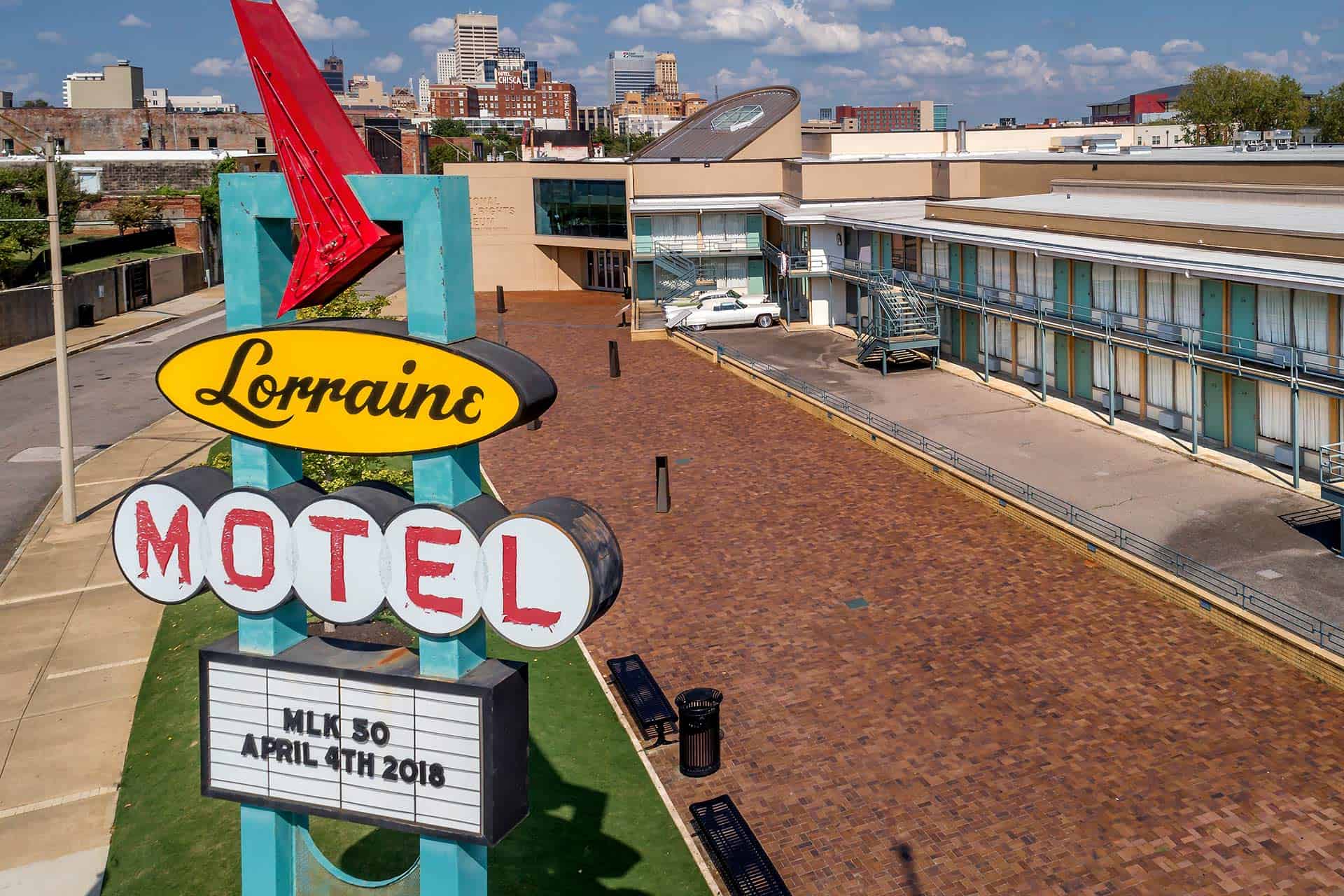
A retired New York Police detective later uncovered that King was initially supposed to stay in a secluded room in the motel, #202, but was moved to Room 306 with an exposed balcony after the concierge received a call supposedly from SCLC in Atlanta asking for the change in room. According to William Pepper and Phillip Nelson, the caller was actually an FBI infiltrator inside SCLC who acted under the orders of police chief Holloman and had been paid through an intermediary. The infiltrator or possibly infiltrators also had the task of getting King out of his room onto the balcony before 6 PM and making sure he was wearing a tie so he could be identified by the assassin.[89]
Coverup
After King’s death, the FBI took charge of the investigation from the MPD, even though the murder was a state and not federal crime. There was an inexplicable 30-minute delay—which enabled the killers to get away. Obvious leads and significant witnesses were subsequently ignored or dismissed, and the Bureau’s files sanitized.[90] An autopsy of King—amazingly—was never conducted.[91]
To help convince the public of Ray’s guilt, the FBI had William Bradford Huie—editor of The American Mercury[92] literary magazine—write a book on Ray that depicted him as a deranged lone gunman.
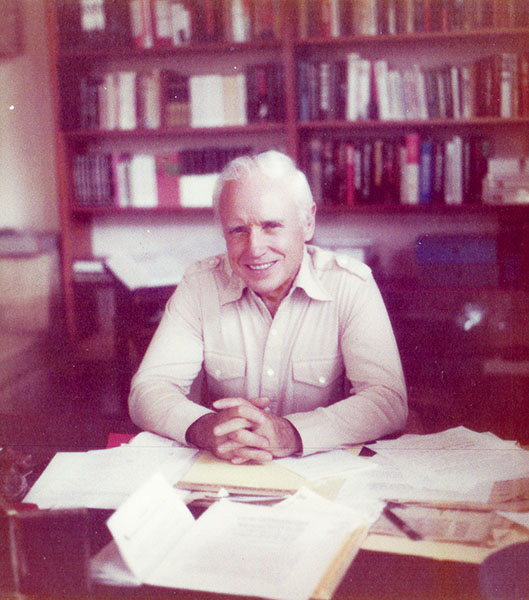
William Bradford Huie [Source: encyclopediaofalabama.org] ] 
[Source: amazon.com]
A conservative Alabaman, Huie had known J. Edgar Hoover since the 1930s. He claimed that Ray was a vicious southern racist who had stalked King, which was untrue. Huie was given access to Ray by his first lawyer, Arthur Hanes, Sr.– a former FBI and CIA agent and the mayor of Birmingham when Eugene “Bull” Connor ordered the use of police dogs and fire hoses against civil rights protesters.[93]
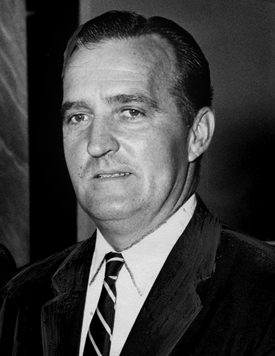
Cartha DeLoach, the FBI agent placed in charge of the investigation, had written a memo to J. Edgar Hoover suggesting that the FBI “quietly sponsor a book” that would tell the “true story of the King case” and “advise friendly newsmen” on a “strictly confidential basis” that Coretta Scott and Ralph Abernathy “were deliberately trying to keep King’s assassination in the news by pulling the ruse of maintaining the King murder was definitely a conspiracy and not committed by one man in order to keep the money coming to Ms. King.”[94]

Captain Ed Atkinson, an aide to Memphis PD chief Frank Holloman, said that he overheard the discussion of two FBI agents at the bathroom window at the rear of the rooming house after the killing in which one of the agents said that the tree branch would have to be cut because no one would ever believe that a shooter could make the shot from that point with the tree in the way.
After undergoing hypnosis, Atkinson identified Memphis police Captain Earl Clark as the one who called for the cutting down of the tree branch.
Drawing King to Memphis
The sanitation workers strike in Memphis started after two Black sanitation workers, Echol Cole and Robert Walker, were crushed to death in the back of a garbage truck on February 1st after taking temporary shelter from a hard rain by kneeling inside the back of the truck.
According to Ron Adkins, whose father Russell ran the Memphis city garbage dump, Cole and Walker did not die because of an accident; “somebody pulled the hammer, pulled the lever on the truck and mashed them up in there.”[95]

The motive behind the killings was to precipitate the strike that would draw King to Memphis—the ideal place for him to be killed. Memphis was ideal because of the close connection between J. Edgar Hoover and Memphis police Chief Holloman and the hostility toward King exhibited by Memphis Mayor Henry Loeb—a segregationist whose family had made a fortune in the dry-cleaning business exploiting Black labor.
Furthermore, Tennessee’s governor, Buford Ellingtone, was a close friend of President Lyndon B. Johnson, a Hoover ally who also wanted King dead.[96]
Ellington’s involvement in the coverup was demonstrated when he fired the state’s commissioner of corrections, Harry S. Avery, after he had begun to investigate King’s death when he came across a letter to Ray typed on McGill University letterhead, which Avery believed might have been related to how Ray was able to obtain his aliases and some Canadian passports.[97]
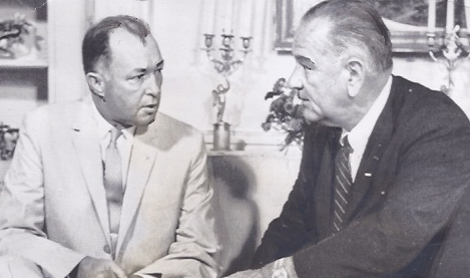
Ghouls in White Smocks
After more than four decades, Johnton Shelby came forward relaying the story of his mother, Lula Mae, who was a surgical aide at St. Joseph’s Hospital that took part in Dr. King’s emergency treatment.
The morning after King’s death she had gathered her family to tell them that, as doctors were working to save King, one of the orderlies, John Billings, following doctors instructions, left the room to “find the men in charge.” When he returned with them, the doctors said there was nothing more they could do to save King and then instructed the rest of the staff to leave the room and not talk about what had occurred.
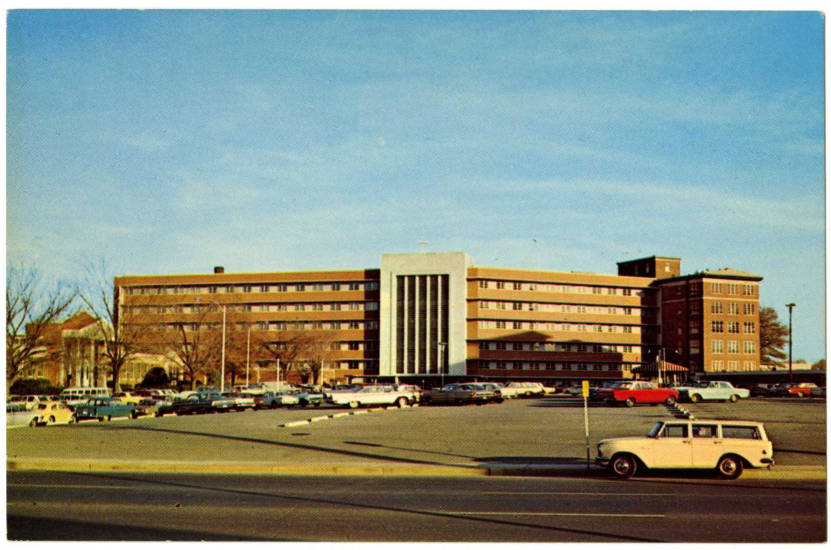
According to Lula Mae, who was the last to leave the room, King was still alive at that time. As she made her way out of the room, the head of surgery—Dr. Breen Bland, a pioneer in blood transfusions and polio vaccinations—and a couple of men in suits told the doctors to “stop working on that nigger and let him die.”

She also heard spitting sounds and turned around just in time to see doctors spitting on King and removing his ventilator tube while putting a pillow over his face to ensure that he died.
Ron Adkins, under oath, stated that he had been with his father, and after he died, his older brother Russell Adkins Jr., when his father and brother discussed the plan with Dr. Bland and Frank Holloman regarding the need to take King to St. Joseph’s Hospital if he had not been killed. Ron recalled that Dr. Bland was prepared to give King a certain lethal injection if it became necessary.[98]
Poor Buddy
On the night of April 4, cab driver Louis Ward went straight to the airport after hearing of King’s shooting and met a fellow driver he knew as Buddy, who said he had gone to the Lorraine Motel shortly before 6 p.m. to pick up a passenger with an enormous amount of luggage.[99]
As they finished loading up his taxi in the Lorraine parking lot, Buddy—who was in his early sixties—turned to look to the area of dense brush and trees opposite the motel. The passenger then punched him on the arm to distract him and told him to look up at King on the balcony where he appeared to be a sitting duck for any would-be assassin.
At that precise moment, King was struck by the fatal bullet, Buddy saw a man [thought to be Earl Clark] come down the wall from the balcony empty handed and get into a black and white Memphis PD car which was stopped at the middle of the intersection between Mulberry and Huling.
The passenger at this time became irritable, saying he had to leave immediately because otherwise the ambulance and other cars would box them in, and he had a plane to catch.
When Ward asked about Buddy a few days later, three or four other drivers in the main taxi office told him they understood he had fallen or been pushed from a speeding car from Route 55 on the other side of the Memphis-Arkansas Bridge late in the evening of April 4 and was dead.[100]
A Pile of Corpses
John Larry Ray—who spent 18 years behind bars after being framed for a crime he says he did not commit—wrote that “the coverup of the King assassination left a pile of corpses in its wake.”[101]
Three months after Jimmy Hoffa’s lawyer, Z.T. Osborn, Jr., decided to help James Earl Ray with his case, he abruptly committed “suicide”—which his wife did not believe.[102]

Two judges considering Ray’s request for a retrial—W. Preston Battle and William E. Miller—died of suspicious heart attacks.[103] Just before he died, Battle had received a request for a new trial from one of Ray’s new attorneys, Richard J. Ryan, which was refused by Battle’s successor, Judge Arthur Faquin, Jr., in contradiction to existing Tennessee law.[104]

The Church Committee hearings later revealed that the CIA had developed a “heart attack gun” which could deliver a tiny frozen needle that, upon entering the body, would deliver a toxin that induced a heart attack but then became undetectable at autopsy.[105]
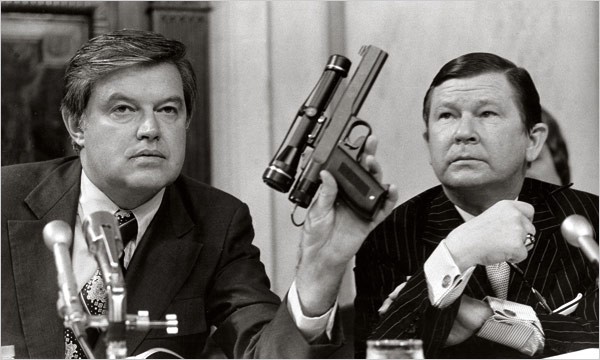
In July 1969, King’s brother, the Reverend Alfred Daniel King, was found dead in his home after an apparent swimming pool accident (“accidental drowning”). By all accounts, he was a fantastic swimmer.[106]
The emergency responders said upon arrival, “Ain’t no water in his lungs, he was dead before he hit the water.” King’s wife, Naomi, said “Absolutely, he was murdered. He was an excellent swimmer. There was no water in his lungs. He was in the fetal position. He had a bruised forehead. Rings around his neck. And he was in his underwear. He was murdered.”
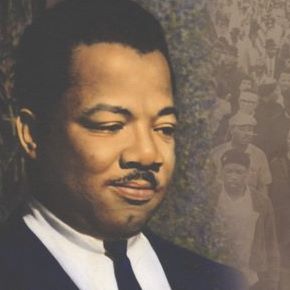
In 1971, Bill Sartor, a 32-year-old writer for Life and Look magazines on the trail of the Marcello/Liberto organized crime connection to King’s death, was murdered in Waco, Texas, the night before he was to interview a nightclub owner linked to Marcello. Sartor was given a lethal dose of methaqualone—slipped into his drink.[107]

Six years after Sartor’s death, former FBI assistant director of intelligence William Sullivan was shot and killed by a man (Robert Daniels) who mistook him for a deer while deer-hunting. The killing occurred shortly before he was scheduled to testify before the HSCA about his former boss, J. Edgar Hoover’s, hatred of King.[108]
Getting Away with Murder
Martin Luther King, Jr.’s assassination was a major negative turning point in American history.
It sparked riots that played into Richard Nixon’s call for law and order, deprived the civil rights and Vietnam anti-war movements of its greatest leader, and destroyed prospects for an inter-racial movement of the poor. Afterwards, two U.S. Army brigades were until 1971 stationed on permanent standby to deal with domestic unrest as part of Operation GARDEN PLOT.
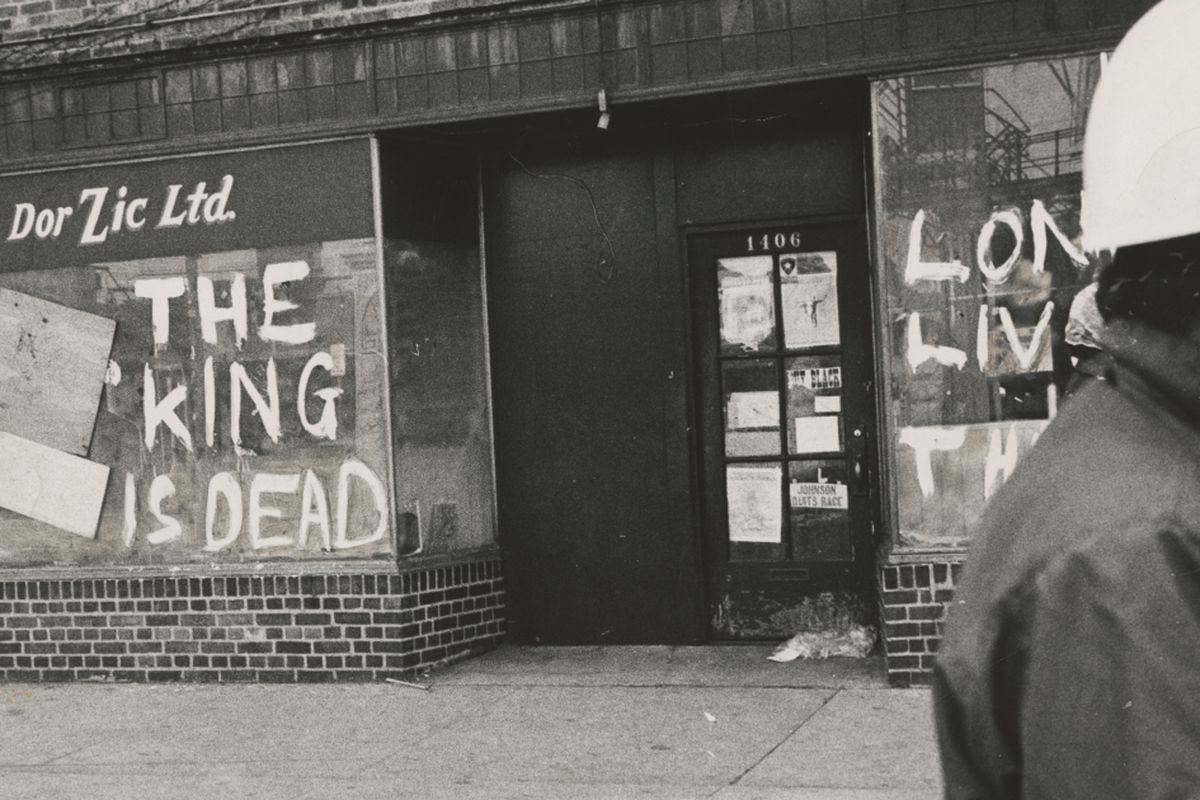
King had prophesied that a world starved of love—in which human caring and the spiritual dimension are de-emphasized—would become one of material scarcity, massive inequality, overly stressed environmental systems, and social disintegration.
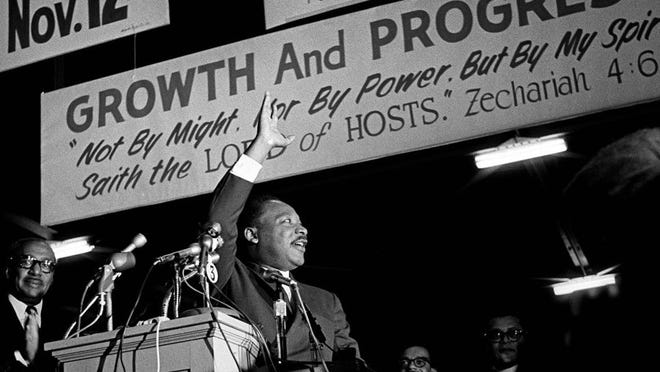
The men who killed King were very clearly starved of love. The evidence indicates that they continue to enjoy impunity for their crime because the U.S. government will never admit that it was behind the killing of a national treasure.

-
See Michael K. Honey, Going Down Jericho Road: The Memphis Strike, Martin Luther King’s Last Campaign (New York: W.W. Norton, 2007); Michael Eric Dyson, I May Not Get There with You: The True Martin Luther King Jr. (New York: The Free Press, 2001); William F. Pepper, The Plot to Kill King: The Truth Behind the Assassination of Martin Luther King Jr. (New York: Skyhorse Publishing, 2016), xvi, xvii. The Johnson administration disbanded the National Conference for New Politics which promoted the King-Spock ticket by having infiltrators adopt an anti-Israel platform that alienated Jewish financiers. ↑
-
On Ray’s background, see Clay Blair, Jr., The Strange Case of James Earl Ray: The Man Who Murdered Martin Luther King (New York: New York Times Company, 1969); William Bradford Huie, He Slew the Dreamer: My Search for the Truth about James Earl Ray and the Murder of Martin Luther King (W.H. Allen/Virgin Books, 1970); and James Earl Ray, Who Killed Martin Luther King Jr.? The True Story by the Alleged Assassin, with foreword by Jesse Jackson and Mark Lane (Washington, D.C.: National Press Books, 1992). ↑
-
William F. Pepper, Orders to Kill: The Truth Behind the Murder of Martin Luther King (New York: Carroll & Graf, 1995), 39. ↑
-
Ray used the alias John Willard and rejected a room in the south of the house for one with a view of the Lorraine Motel. ↑
-
Phillip F. Nelson, Who REALLY Killed Martin Luther King Jr.? The Case Against Lyndon B. Johnson and J. Edgar Hoover, with new foreword by Edgar F. Tarro (New York: Skyhorse Publishing, 2018), 210. ↑
-
William F. Pepper, An Act of State: The Execution of Martin Luther King (London: Verso, 2003). Martin Luther King III holds the same view as his mother, telling reporters in 1986 that “in my opinion it had to be a conspiracy of some kind. It’s probably a fact—but that’s just my opinion—that the intelligence community played a role. I know whatever happened it was a serious, massive effort.” Philip H. Melanson, The Martin Luther King Assassination: New Revelations on the Conspiracy and Cover-up, 1968-1991 (New York: Shapolsky Publishers Inc., 1989), 185. ↑
-
Foreman told a woman he was attracted to named Gloria that Ray was innocent but “had to be sacrificed.” Pepper, An Act of State, 56. Ray had been subjected to inhumane prison conditions, deprived of access to fresh air, natural light, privacy or basic hygienic or toiletry functions—which was designed to coerce from him a guilty plea. ↑
-
Jeff Cohen, “The Assassination of Martin Luther King,” in Government by Gunplay: Assassination Conspiracy Theories from Dallas to Today, Sid Blumenthal and Harvey Yazijian, eds., with introduction by Philip Agee (New York: Signet, 1976), 50. Foreman began negotiating for a guilty plea before undertaking an investigation of the evidence in the case. ↑
-
John Larry Ray and Lyndon Barsten, Truth at Last: The Untold Story Behind James Earl Ray and the Assassination of Martin Luther King Jr. (Guilford, CT: The Lyons Press, 2008), 162, 183. The crime scene investigator was named Herb McDonnell who had also analyzed the murders of Fred Hampton and Robert Kennedy. The bathroom wall was too close to have allowed the Remington rifle enough room to sit at an angle that could fire to Room 306 at the Lorraine. In 2012, during a $27.5 million renovation to the Lorraine Motel and Bessie Brewer’s rooming house, the bathroom was remodeled to make it appear more like a sniper’s nest from where the shot that killed King could have been legitimately fired. ↑
-
Melanson, The Martin Luther King Assassination, 169. Memphis PD officer J.E. “Bud” Ghormley also went from Fire Station #2 behind the Lorraine Motel to South Main along with a patrolman named Gross in under two minutes and saw nobody running from the flophouse—even though it surely would have taken Ray longer than two minutes to put his bundle together—containing the rifle, radio, cans of beer and other assorted items—and flee. Ray and Barsten, Truth at Last, 115. ↑
-
Pepper, An Act of State, 48. Witnesses saw no police cars parked in that spot. The drop would have been a detour of time and motion for Ray who was unlikely to have willfully incriminated himself. Besides the murder weapon, the bedsheet included his prison radio with his inmate number on it. Melanson, The Martin Luther King Assassination, 113. ↑
-
Pepper, An Act of State, 227; Ray, Who Killed Martin Luther King Jr.? 134; Pepper, Orders to Kill, 137; Melanson, The Martin Luther King Assassination, 110, 111. ↑
-
Harold Weisberg, Frame-Up: The Assassination of Martin Luther King, with a postscript by James Earl Ray, rev. ed. (New York: Skyhorse, 1993), 440. ↑
-
The bedsheet was filled with beer bottles and some bobby pins, which a fleeing killer would never likely have taken pains to try and preserve. ↑
-
Pepper, An Act of State, 15, 116; Ray, Who Killed Martin Luther King Jr.? 11; Weisberg, Frame-Up, 160, 161. ↑
-
Pepper, An Act of State, 196. Roy Davis said that “he would not like to rely on him [Stephens] as my only witness.” [NOTE: Who is Roy Davis?] ↑
-
Pepper, An Act of State, 15; Pepper, Orders to Kill, 153. ↑
-
Walden said that Ray was not the man who emerged from the bathroom after the shooting, and that she had been offered $100,000 to lie and pinpoint Ray as the man she saw. When she refused to do so, she was whisked away to an insane asylum outside the city, which she claims was an attempt to silence her. She had no history of psychiatric problems and later won release from court after ten years of incarceration. Ray, Who Killed Martin Luther King Jr., 11. Gerald Posner—in Killing the Dream: James Earl Ray and the Assassination of Martin Luther King, Jr. (New York: Random House, 1995), 234—claims that Walden was an alcoholic and uncredible witness who was admitted to the psychiatric hospital after she had been taken to the hospital because she hurt her foot. Riddled with anxiety, she was examined by a staff psychiatrist who said she found her to be suffering from psychotic depression and was suicidal. She was diagnosed with schizophrenia, chronic brain syndrome induced by alcoholism and delusional behavior and suffered from confabulations, or a desire to concoct stories to fill a gap in her memory. Lawyer Mark Lane, however, discovered that a series of illegal actions by the police and hospital was the basis of Walden’s confinement and that the real reason, according to her attorney C.M. Murphy, was to “safeguard their case against Ray”—meaning that it was about forcibly preventing exculpatory evidence that would point to Ray’s innocence. ↑
-
Pepper, Orders to Kill, 94. The man she saw went out the rear door and not front. ↑
-
Pepper, An Act of State, 15; Ray, Who Killed Martin Luther King Jr.? 160. ↑
-
Pepper, An Act of State, 15.
Curiously, Ray’s Mustang getaway car was found overflowing with ashes and cigarette butts though Ray had been a lifelong non-smoker and was a fanatic for cleanliness. Michael Newton, The King Conspiracy (Los Angeles, Calif.: Holloway House Publishing, 1987), 8. -
Ray and Barsten, Truth at Last, 113, 114. Two eyewitnesses, William Reed and Ray Hendrix, who had earlier looked at Ray’s Mustang, claimed to have seen it driven by a man resembling Ray turn the corner on South Maine Street in front of them around 5:45 p.m. ↑
-
Ray and Barsten, Truth at Last; Blair, Jr., The Strange Case of James Earl Ray, 97. Posner, Killing the Dream, 91, 135, includes interviews of people Ray was in jail with who said he was a racist and pointed to Ray’s valorization of Hitler during World War II and Northern and Southern Rhodesia to where he tried to escape after King’s killing. The credibility of these testimonies has been put into question, however, and other of Ray’s cellmates in prison and others who knew him insist he was not a racist and could not have killed King. Posner claims that Ray once said, after watching King in the Jefferson City prison on television, that he would kill King. However, it was later confirmed by the warden that prisoners could only watch tv starting in 1970. Pepper, Orders to Kill, 242, 243. ↑
-
Ray never fired a gun in any of the robberies in which he participated and never upgraded his marksmanship skills from his days in the U.S. Army. Researcher Philip Melanson writes that there was no evidence that Ray “had ever shot at another human being much less killed one, or that he was violence prone. Yet he allegedly became a cold-blooded killer for hire.” Melanson, The Martin Luther King Assassination, 123. ↑
-
Nelson, Who REALLY Killed Martin Luther King Jr.? 159. ↑
-
Pepper, Orders to Kill, 136, 210. Jim Reid, a Memphis Press-Scimitar reporter and photographer, took a picture of the cutting. ↑
-
Pepper, An Act of State, 12; Jesse Ventura, with Dick Russell, American Conspiracies: Lies, Lies and More Dirty Lies That the Government Tells Us (New York: Skyhorse Publishing, 2010), 57. One of those witnesses was Andrew Young. ↑
- Newton, The King Conspiracy, 50. The man, according to Carter, then threw the gun into the bushes, put the barrel into his jacket and melted into the crowd. ↑
-
Pepper, An Act of State, 115. Catling said that she was never interviewed by any law enforcement officials. She lived close to the scene of King’s death for 32 years though, inexplicably, nobody knocked on her door until Ray’s attorney, William Pepper, did in November 1999. At the time, she said she was relieved to get the information off her chest and had been burdened all these years because she knew that an innocent man was in prison. Catling also said that right after the shooting she witnessed a white man running from an alley halfway up Huling Street, which ran to a building connected to the rooming house. He arrived at a car parked on the south side of Huling and facing east, got in, and drove quickly away, turning left onto Mulberry and going right past her and the Memphis police officers opposite her who were manning the barricade. She was surprised that the police paid no attention to him and did not try to prevent him from leaving the area. The man, she said, was not Ray, as he was heavier than Ray. ↑
-
Pepper, An Act of State, 12. ↑
-
Pepper, An Act of State, 117. Memphis police dog officer J.B. Hodges discovered footprints from the bushes to the rooming house which were never identified or explained. ↑
-
Pepper, An Act of State, 18, 132, 133. ↑
-
Mark Lane and Dick Gregory, Code Name “Zorro”: The Murder of Martin Luther King, Jr. (Englewood Cliffs, N.J.: Prentice-Hall Inc., 1977), 279. ↑
-
Pepper, An Act of State, 18, 193; Melanson, The Martin Luther King Assassination, 172. ↑
-
The FBI had told Redditt that he was under the threat of assassination but then cabled the MPD that this threat was a mistake. Despite being told the latter, the MPD still kept Redditt under home confinement. The source of the alleged threat—the Mississippi Freedom Democratic Party—gives indication of the underlying political agenda at play. ↑
-
Pepper, An Act of State, 18. Something else unexplained was that the Invaders, a black group trying to address local needs in the city, was given an order to leave the motel ten minutes before King was shot. ↑
-
Pepper, An Act of State. A skeptical view of Spates’s claims about Jowers is found in Posner, Killing the Dream, 282. Posner claims that Spates, who was only seventeen at the time, never worked at Jim’s Grill and was not reported by police as having been at the grill at the time of King’s killing when they had interviewed patrons and staff there just after the killing. He also claims that Jowers was motivated by the potential for financial gain and that his story was false. ↑
-
Pepper, An Act of State, 23, 32, 33, 47, 160. The customers were talking, drinking and playing shuffleboard and barely noticed Jowers. ↑
-
Pepper, An Act of State, 26, 214. Akins also allegedly threatened Betty Spates and her sister Bobbi who knew too much about the killing. Posner, Killing the Dream, 282. Jowers told Akins about his involvement in the assassination after he had been drinking. An FBI agent told Bill Hamblin that the CIA had ordered King’s killing. ↑
-
Pepper, An Act of State, 119. ↑
-
Pepper, An Act of State, 26. The HSCA inexplicably failed to interview McFerren. ↑
-
Pepper, An Act of State, 28. ↑
-
Pepper, An Act of State, 145. ↑
-
Clark died in 1987. His wife concocted an alibi for Earl that broke down under scrutiny. Pepper, An Act of State, 152, 153. ↑
-
Pepper, The Plot to Kill King. ↑
-
Pepper, An Act of State, 13, 94; Pepper, Orders to Kill, 130, 152; Melanson, The Martin Luther King Assassination, 171; Honey, Going Down Jericho Road, 405. McCollough supplied Lt. Eli Arkin, his MPD intelligence division control officer, with regular reports on the Invaders. One police officer later said that he was so strident in his statements that officers who did not know he was an agent “would have given their eye teeth to have him locked up.” The Invaders promoted violence and participated in provocative acts during the sanitation workers strike as part of an effort to discredit King. ↑
-
Pepper, The Plot to Kill King, 223, 224, 227, 228. Curtis was intimidated into silence after the killing. ↑
-
Pepper, The Plot to Kill King, 232, 234. ↑
-
Ray and Barsten, Truth at Last, 18, 19, 20. ↑
-
Ray and Barsten, Truth at Last, 20. Barsten found that some of the men listed as being part of the unit were not actually there. In 1970, when Congressman L. Mendel Rivers (Dem.-S.C.) tried to access Ray’s Army records, he was stonewalled and told there were sensitive medical aspects that could not be disclosed. In Ventura, American Conspiracies, 62. ↑
-
Nelson, Who REALLY Killed Martin Luther King Jr., 96. ↑
-
Ray and Barsten, Truth at Last, 23, 103. Barsten found one surviving 7892nd Regiment medical file indicating that a soldier named Neal Thompson was given the hypnotic drug phenobarbital. John Larry Ray believes the shooting of Washington may have been part of a drugging operation and asks whether James’s psychological makeup was the reason he was chosen to be a patsy years later in the murder of Martin Luther King, Jr. ↑
-
Ray and Barsten, Truth at Last, 27. ↑
-
Ray and Barsten, Truth at Last, 28. ↑
-
Ray and Barsten, Truth at Last, 50. ↑
-
Ray and Barsten, Truth at Last, 53. ↑
-
Ray and Barsten, Truth at Last, 54. Members of Nash’s family blamed his death on U.S. intelligence agencies. ↑
-
Ray and Barsten, Truth at Last, 56, 57, 62. Peterson wrote a book on hypnosis. In the early 1970s, Freedom magazine published an article asserting that mind-control operations were being run in the Fulton, Missouri, prison where Ray was treated. ↑
-
Ray and Barsten, Truth at Last, 62. ↑
-
Ray and Barsten, Truth at Last, 73; Nelson, Who REALLY Killed Martin Luther King Jr. Ray’s brother John Larry was told through the criminal grapevine that his brother’s escape from prison was orchestrated by Richard Helms and the CIA and its agents, such as Wilkinson, who ran the prison. ↑
-
Not knowing anything about rifles, Ray bought the wrong one and had to go back. He was also sent by Raoul on undisclosed missions to Los Angeles and Nuevo Laredo, Mexico. ↑
-
Pepper, An Act of State, 77. Galt had a top-secret security clearance. Union Carbide was, at the time, engaged in high-security research projects controlled by its U.S. parent. ↑
-
Pepper, Orders to Kill, 435; Melanson, The Martin Luther King Assassination, ch. 5. ↑
-
Ray had been told to go to Memphis for a gun-smuggling operation that Raoul said would make him rich. ↑
-
Joe Davis, “The King Assassination: Was James Earl Ray a Patsy?” Ann Arbor Sun, January 22, 1976, https://aadl.org/node/200647; Ray and Barsten, Truth at Last, 104. Perhaps not coincidentally, Grace Walden identified the man leaving the rooming house as a Louisiana State trooper, who may have been the same Raoul. ↑
-
Melanson, The Martin Luther King Assassination, 177, 178, 179; Ray and Barsten, Truth at Last, 84. When Melanson questioned Ray about Kimble, he became very nervous. Kimble reportedly had contacts with CIA flyer David Ferrie who was allegedly implicated in the Kennedy assassination. ↑
-
Ray and Barsten, Truth at Last, 28. Kimble’s claims are partially corroborated by his then-girlfriend Marcelle Mathieu. A Canadian reporter, Andy Salwyn found witnesses who placed Kimble in Montreal in the summer of 1967, at the same time as Ray, and he provided this information in a detailed report to the Royal Canadian Mounted Police (RCMP). ↑
-
See Alfred W. McCoy, A Question of Torture: CIA Interrogation from the Cold War to the War on Terror (New York: Metropolitan Books, 2005). ↑
-
Ray and Barsten, Truth at Last, 104. He also said that someone other than Ray dropped the bundle in front of the Canipe Amusement Company. Adding some credence to Kimble’s theory, in 1975, Memphis PD officer Eddie Redditt was flown to Washington to identify Memphis PD officers at the scene—and left to wonder why he had to fly all the way to Washington to do so. The trip would make sense if the FBI was nervous that the identities of the police at the scene of King’s death could be revealed or fraud uncovered. ↑
-
Stephen G. Tompkins, “Army Feared King, Secretly Watched Him: Spying on Blacks Started 75 Years Ago,” The Commercial Appeal, Memphis, Tennessee, March 21, 1993, https://ratical.org/ratville/JFK/ArmyFearedKing.html. Army Intelligence opened its file on King in 1947 with a photograph showing him and other Morehouse College students leaving a meeting of Mrs. Dorothy Lilley’s Intercollegiate Council. Lilley was a suspected Communist. In 1917, Army intelligence had spied on King’s maternal grandfather, Reverend A.D. Williams, who was a founder of the Atlanta chapter of the National Association for the Advancement of Colored People (NAACP), which army intelligence officers believed was “an agitative pro-Soviet organization for propagandizing the Negroes,” according to a 1926 report by Lt. Col. Walter O. Boswell, Army Intelligence executive officer at the War Department. ↑
-
Pepper, The Plot to Kill King, 135. ↑
-
Pepper, An Act of State, 68. Downie had advised LBJ to get out of Vietnam, prompting LBJ to pound the table and say, “I cannot get out of Vietnam, John, my friends are making too much money.” These friends included Texas oil barons H.L. Hunt and Clint Murchison and George Brown, CEO of Brown & Root. ↑
-
Pepper, Orders to Kill, 432. Memphis police who participated in the clandestine training course in riot control and surveillance believed it was a cover for a covert intelligence operation run by its instructor, nicknamed Coop, who dropped out of sight just before King’s assassination. ↑
-
Pepper, An Act of State, 161; Pepper, Orders to Kill, 419-430. Downie was commander of the 902nd Military Intelligence Group, a unit based inside the Department of Defense. Posner disputes the existence of this team in chapter 32 of Killing the Dream. CIA operative Jack Terrell, a whistleblower in the Iran-Contra scandal, testified at the 1999 civil trial that his friend J.D. Hill was part of an army sniper team deployed to Memphis on April 4, though their mission was canceled. Hill died suspiciously in a murder that was blamed on his wife but had the appearance of a professional killing. Hill was known to drink heavily and may have begun to talk to others about the Memphis operation. ↑
-
Pepper, Orders to Kill, 434. After the assassination, police picked up a man named Ted Andrews wearing a dark suit who looked like Ray and was staying in Bessie Brewer’s rooming house. He had a background in the U.S. Navy—which the FBI deleted information about. Andrews never established a proper alibi and remains a figure of suspicion. Melanson, The Martin Luther King Assassination, 117-123. ↑
-
Pepper, An Act of State, 101. ↑
-
Pepper, Orders to Kill, 89. ↑
-
Pepper, The Plot to Kill King, 238; Nelson, Who REALLY Killed Martin Luther King Jr., 82, 83. Russell Adkins, Sr., died in 1967. His son Russell, Jr., a 30-year Marine Corps veteran, took over in the planning of King’s killing after his death. Ron served six years in the U.S. Marine Corps. He said that, until he was nine years old, his father took him to meetings including with Tolson, Mayor Henry Loeb, and mobsters Frank Liberto and Carlos Marcello. ↑
-
Nelson, Who REALLY Killed Martin Luther King Jr., 84; Pepper. The Plot to Kill King, 40. Adkins witnessed the $25,000 payoff to Swenson. ↑
-
Pepper, An Act of State, 11. ↑
-
Pepper, An Act of State; David J. Garrow, The FBI and Martin Luther King, Jr.: From “Solo” to Memphis (New York: W.W. Norton, 1981). ↑
-
Melanson, The Martin Luther King Assassination, 74. ↑
-
Ray, Who Killed Martin Luther King Jr.? 248; Pepper, Orders to Kill, 14; Melanson, The Martin Luther King Assassination, 74; Lane and Gregory, Code Name “Zorro,” 144. Holloman said he was a good friend of Hoover. When the FBI’s Atlanta office that Holloman had headed, heard news of King’s assassination, they yelled “we got Zorro.” ↑
-
Honey, Going Down Jericho Road, 388. The unit that Holloman served in during World War II was with the Strategic intelligence Services. It included numbers of individuals later linked to the JFK assassination.
-
Honey, Going Down Jericho Road, 360, 370. The MPD killed a Black teenager, Charles Payne, and mercilessly beat many protesters and looters during the sanitation workers strike, invaded people’s homes and called Blacks the n-word. Holloman said that there was a war in the streets of Memphis and that the police had used restraint. ↑
-
Nelson, Who REALLY Killed Martin Luther King Jr., 68. ↑
-
Ray, Who Killed Martin Luther King Jr.? 248; Pepper, The Plot to Kill King; Nelson, Who REALLY Killed Martin Luther King Jr., 162. ↑
-
Pepper, An Act of State, 186, 187. ↑
-
Pepper, An Act of State, 190, 240; Nelson, Who REALLY Killed Martin Luther King Jr., 162, 203-206. ↑
-
Pepper, Orders to Kill, 482, 483. Pepper notes that the drunkenness of the state’s main witness, Charlie Stephens, was concealed. Pepper asks where are: the interviews conducted of yellow cab driver Paul, the photographs of the bullet removed from King’s body, the photographs of the scene of the crime as it was at the time, before the bushes at the back of the rooming house and the hedge between the parking lot and the fire station had been cut down? ↑
-
Nelson, Who REALLY Killed Martin Luther King Jr., xxix. ↑
-
Founded by H.L. Mencken, The American Mercury was once a great magazine that featured essays by luminaries like F. Scott Fitzgerald, Langston Hughes, William Faulkner, W.E.B. DuBois and Carl Sandburg. According to Phillip Nelson, however, Huie managed to turn the Mercury into an FBI/CIA rag whose roster of writers included J. Edgar Hoover. Before its ultimate demise, it became a chronicle of racism and anti-semitism. ↑
-
Nelson, Who REALLY Killed Martin Luther King Jr., 104, 105, 380, 381. The FBI additionally sponsored Gerold Frank’s book, An American Death: The True Story of the Assassination of Dr. Martin Luther King, Jr., and the Greatest Manhunt of Our Time (New York: Doubleday, 1972) and a book by George McMillan who had long connections to the CIA.
After leaving the FBI in 1959, Hanes became a security officer with the Hayes Aircraft Corporation in Birmingham while doubling as a CIA agent. The CIA recruited Hayes employees as pilots for the 1961 Bay of Pigs fiasco, and when four. of them died in an abortive raid, Hanes drew the assignment of warning their widows to keep eternal silence. Newton, The King Conspiracy, 174. -
Ray, Who Killed Martin Luther King Jr.? 250; Pepper, Orders to Kill, 53. ↑
-
Nelson, Who REALLY Killed Martin Luther King Jr., 70. Ron called Clyde Tolson “Uncle Clyde.” ↑
-
Nelson, Who REALLY Killed Martin Luther King Jr., 77. ↑
-
Nelson, Who REALLY Killed Martin Luther King Jr., 77. ↑
-
Pepper, The Plot to Kill King, 261, 274; Nelson, Who REALLY Killed Martin Luther King Jr., 197, 198. ↑
-
William Pepper refers to Buddy as Paul. Buddy’s last name was thought to be Butler. ↑
-
Pepper, An Act of State, 51, 52; Pepper, The Plot to Kill King, 113. Buddy’s killer was reportedly Chester “Chess” Butler, a master killer used sometimes by Russell Adkins, Sr. Ron Adkins observed the scene in which Buddy’s cab was being loaded with heavy bags and said that he heard Butler confess to killing Buddy in front of his wife, Mildred, the night that he killed him. Adkins said that Chess had been told to take care of Buddy by either Holloman or Russell Jr or Earl Clark, one or the other. Clark was concerned because he thought the driver saw him come down from the wall and turned to face him, and therefore could have identified him. ↑
-
Ray and Barsten, Truth at Last, 136. 137. John Larry believes that the feds may have killed his friend Margie, who died of a heart attack in her mid-twenties. She had been a liaison between him and the FBI. King’s mother, Alberta, was tragically murdered in a church shooting at Ebenezer Baptist Church in 1974 which was also suspicious. ↑
-
Ray and Barsten, Truth at Last, 136. ↑
-
Ray, Who Killed Martin Luther King Jr. 138-140, 163; Ray and Barsten, Truth at Last, 168. ↑
-
Ryan attributed Faquin’s decision to an FBI-CIA conspiracy. ↑
-
Nelson, Who REALLY Killed Martin Luther King Jr., 260. ↑
-
The week after his brother’s death, Alfred had given a powerful sermon at the Ebenezer Baptist Church in Atlanta entitled “Why America May Go to Hell.” ↑
-
Pepper, Orders to Kill, 239; Ventura, American Conspiracies, 58. Sartor, who was on the staff of the Birmingham News, had reported on an alleged meeting between Ray and an associate Charles Stein with members of the Carlos Marcello crime family in New Orleans before King’s assassination. Sartor’s original death certificate was evasive, stating that the cause of death was undetermined. After 21 years, it was acknowledged that he died from an overdose when Sartor was not known to use drugs of any kind. The Waco district attorney had characterized his death as a homicide. Louis Lomax, a Black journalist who was investigating the deaths of both Malcolm X and Martin Luther King, Jr., also died in a suspicious car accident. ↑
-
Nelson, Who REALLY Killed Martin Luther King Jr., 400. Gary Revel, who worked on the HSCA investigation, wrote to author Phillip Nelson that his “brother and cousin’s husband, Ivan Riley, as well as Sullivan and five other FBI officials who could have been valuable to my investigation died mysteriously or were simply killed during 1977.” Sullivan was a liberal Democrat who came to work one day in 1971 to find the lock on his door changed and nameplate removed. He had begun to speak out, saying that Hoover had greatly overemphasized the threat to national security posed by the American Communist Party while devoting less attention than was warranted to violations of Federal civil rights laws in the South. ↑
CovertAction Magazine is made possible by subscriptions, orders and donations from readers like you.
Blow the Whistle on U.S. Imperialism
Click the whistle and donate
When you donate to CovertAction Magazine, you are supporting investigative journalism. Your contributions go directly to supporting the development, production, editing, and dissemination of the Magazine.
CovertAction Magazine does not receive corporate or government sponsorship. Yet, we hold a steadfast commitment to providing compensation for writers, editorial and technical support. Your support helps facilitate this compensation as well as increase the caliber of this work.
Please make a donation by clicking on the donate logo above and enter the amount and your credit or debit card information.
CovertAction Institute, Inc. (CAI) is a 501(c)(3) non-profit organization and your gift is tax-deductible for federal income purposes. CAI’s tax-exempt ID number is 87-2461683.
We sincerely thank you for your support.
Disclaimer: The contents of this article are the sole responsibility of the author(s). CovertAction Institute, Inc. (CAI), including its Board of Directors (BD), Editorial Board (EB), Advisory Board (AB), staff, volunteers and its projects (including CovertAction Magazine) are not responsible for any inaccurate or incorrect statement in this article. This article also does not necessarily represent the views the BD, the EB, the AB, staff, volunteers, or any members of its projects.
Differing viewpoints: CAM publishes articles with differing viewpoints in an effort to nurture vibrant debate and thoughtful critical analysis. Feel free to comment on the articles in the comment section and/or send your letters to the Editors, which we will publish in the Letters column.
Copyrighted Material: This web site may contain copyrighted material the use of which has not always been specifically authorized by the copyright owner. As a not-for-profit charitable organization incorporated in the State of New York, we are making such material available in an effort to advance the understanding of humanity’s problems and hopefully to help find solutions for those problems. We believe this constitutes a ‘fair use’ of any such copyrighted material as provided for in section 107 of the US Copyright Law. You can read more about ‘fair use’ and US Copyright Law at the Legal Information Institute of Cornell Law School.
Republishing: CovertAction Magazine (CAM) grants permission to cross-post CAM articles on not-for-profit community internet sites as long as the source is acknowledged together with a hyperlink to the original CovertAction Magazine article. Also, kindly let us know at info@CovertActionMagazine.com. For publication of CAM articles in print or other forms including commercial internet sites, contact: info@CovertActionMagazine.com.
By using this site, you agree to these terms above.
About the Author

Jeremy Kuzmarov holds a Ph.D. in American history from Brandeis University and has taught at numerous colleges across the United States. He is regularly sought out as an expert on U.S. history and politics for radio and TV programs and co-hosts a radio show on New York Public Radio and on Progressive Radio News Network called “Uncontrolled Opposition.”
He is Managing Editor of CovertAction Magazine and is the author of six books on U.S. foreign policy, including Obama’s Unending Wars (Clarity Press, 2019), The Russians Are Coming, Again, with John Marciano (Monthly Review Press, 2018), Warmonger. How Clinton’s Malign Foreign Policy Launched the U.S. Trajectory From Bush II to Biden (Clarity Press, 2023); and with Dan Kovalik, Syria: Anatomy of Regime Change (Baraka Books, 2025).
Besides these books, Kuzmarov has published hundreds of articles and contributed to numerous edited volumes, including one in the prestigious Oxford History of Counterinsurgency .
He can be reached at jkuzmarov2@gmail.com and found on substack here.

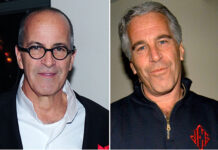
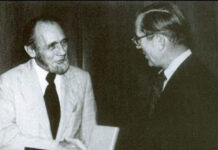
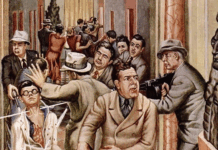

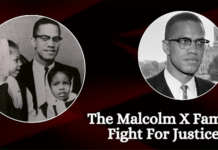
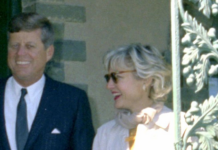
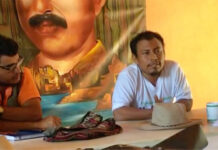
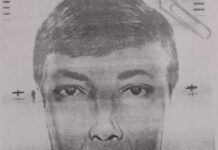
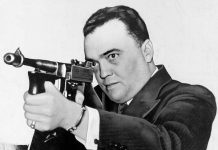

Excellent article overall but missing two very crucial points:
(1) Frank Holloman had been a manager in the FBI/SIS during World War II, and the largest group of players involved in the JFK assassination were likewise in that outfit (seond smaller group had been in the same OSS unit). The SIS was headquartered in the Rockefeller Center Building where Neson Rockefeller kept his office and they reported to him, whose title was CIAA, Coordinator for Inter-American Affairs and Nelson’s administrator was George deMohrenschildt. (Some of those SIS members would move on to the newly created CIA, while others remained with the FBI. THE OSS types moved on to the CIA and Secret Service.)
(2) The man in the bushes was most likely Mozes Maschkivitzan, whose likeness had been rendered in a police artist drawing from witnesses nearby! Maschkivitzan was a Belgian criminal and CIA contract killer and he appears in the famous “three tramps” photo from the JFK assassination (the shorter one with the upturned collar). Maschkivitzan lived on a ship or small yacht in the Carribean and appeared also at the assassination of Patrice Lumumba in the DRC —- although not directly responsible, he helped Lumumba escape UN forces’ custody (Belgian Army contingent) into the arms of Mobutu’s soldiers, who flew him to Katanga for execution!
The assassinations of Patrice Lumumba, the Diem brothers in Saigon, President Kennedy several weeks later in Dallas, Rev. King in Memphis and Sen. Bobby Kennedy in LA all appeared directly connected, and ordered by the same element.
Interestingly, Mike King was not a real Biblical Christian even though he used the moniker “Reverend”….it is well documented that he underwent secret training in the doctrines of Communism in Cuba and deceased reporter Alan Stang and his black woman sidekick followed King around in the early ’60’s as he went around the South trying to stir up division between black and white (yes, the same tactics used by Commies today) and documented his experiences…an article written by him before he died is here: Uncelebrate MLK Day – https://newswithviews.com/Stang/alan28.htm
Just sayin’ – nothing is ever as it appears to be in today’s upside down world
[…] Jeremy Kuzmarov Covert Action Magazine […]
[…] ! Did J. Edgar Hoover Order the Assassination of Martin Luther King Jr? By Jeremy […]
[…] King Remained Hopeful to the End, by Dedrick Asante Muhammad Did J. Edgar Hoover Order the Assassination of Martin Luther King Jr? by Jeremy Kuzmarov […]
[…] visit with orders to shoot to kill him and aide Andrew Young [later mayor of Atlanta] on command.[70] King was considered “a Negro who repeatedly preached the message of Hanoi and […]
[…] two very different but interesting articles. In the Covert Action Magazine, Jeremy Kuzmarov asks: Did J. Edgar Hoover Order the Assassination of Martin Luther King Jr? – and starts: “mounting evidence suggests that King may have been murdered as part of a […]
Help us promote Dr. William F Pepper as a public speaker. https://hiddentruthaboutmlk.com/
GREAT article!!!!!!! thank you, Jeremy